Strategies to build links to your ecommerce store:
- Build a community
- Use PR stunts
- Make your products memorable
- Create seasonal landing pages
- Newsjacking
- Give back to charity
- Develop sponsorship programs
- Offer discounts
- Run giveaways
- Create useful guides
- Build a blog
- Run a podcast
- Create infographics
- Develop tools such as calculators and widgets
Link building is as much art as science.
The science is in the numbers. The art is in creating something that’s link-worthy. But even if you have the science and art down, getting links has become harder.
First, online marketers are well aware of the value of links, which sets the bar for getting them very high.
Second, Google’s war on link building over the last years has set the bar even higher, as people are worried about their sites getting hurt by making a wrong choice in their linking.
Finally, link building is especially difficult in ecommerce because you often compete against sites that sell the same products for the same price (look at how all the products have the same price in the Google Shopping ads).
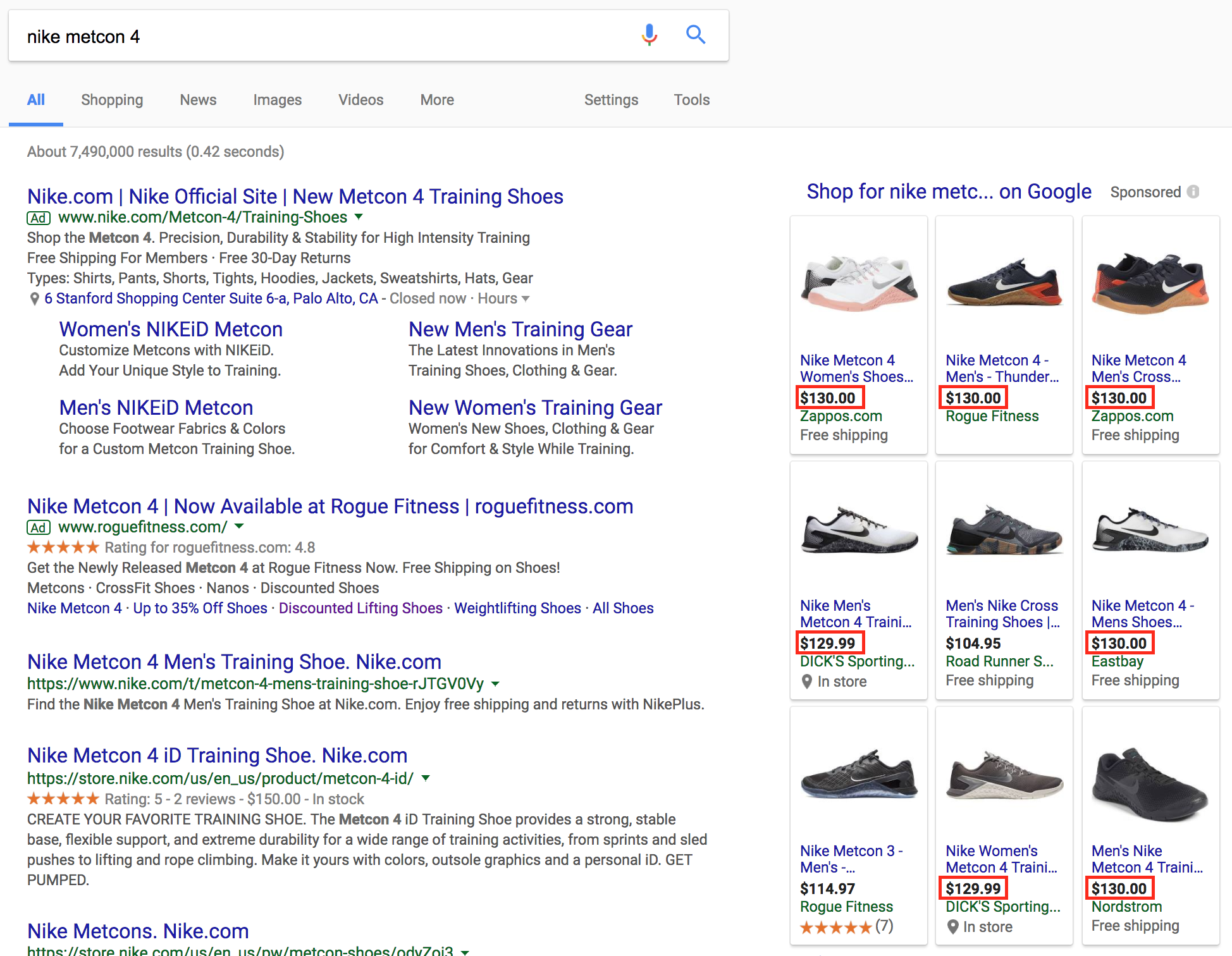
Ranking in organic search results is more important than ever in times of less organic reach and increased competition. One of the main pillars of organic rankings is, of course, **backlinks**.
Ecommerce link building is challenging, but that makes it so exciting ;-).
I looked at the top 50 ecommerce retailers in the US to expose their obvious and hidden link building strategies using backlink data from Ahrefs. On top of that, I analyzed long-established giants like eBay and “newcomers” like Dollar Shave Club.[*]
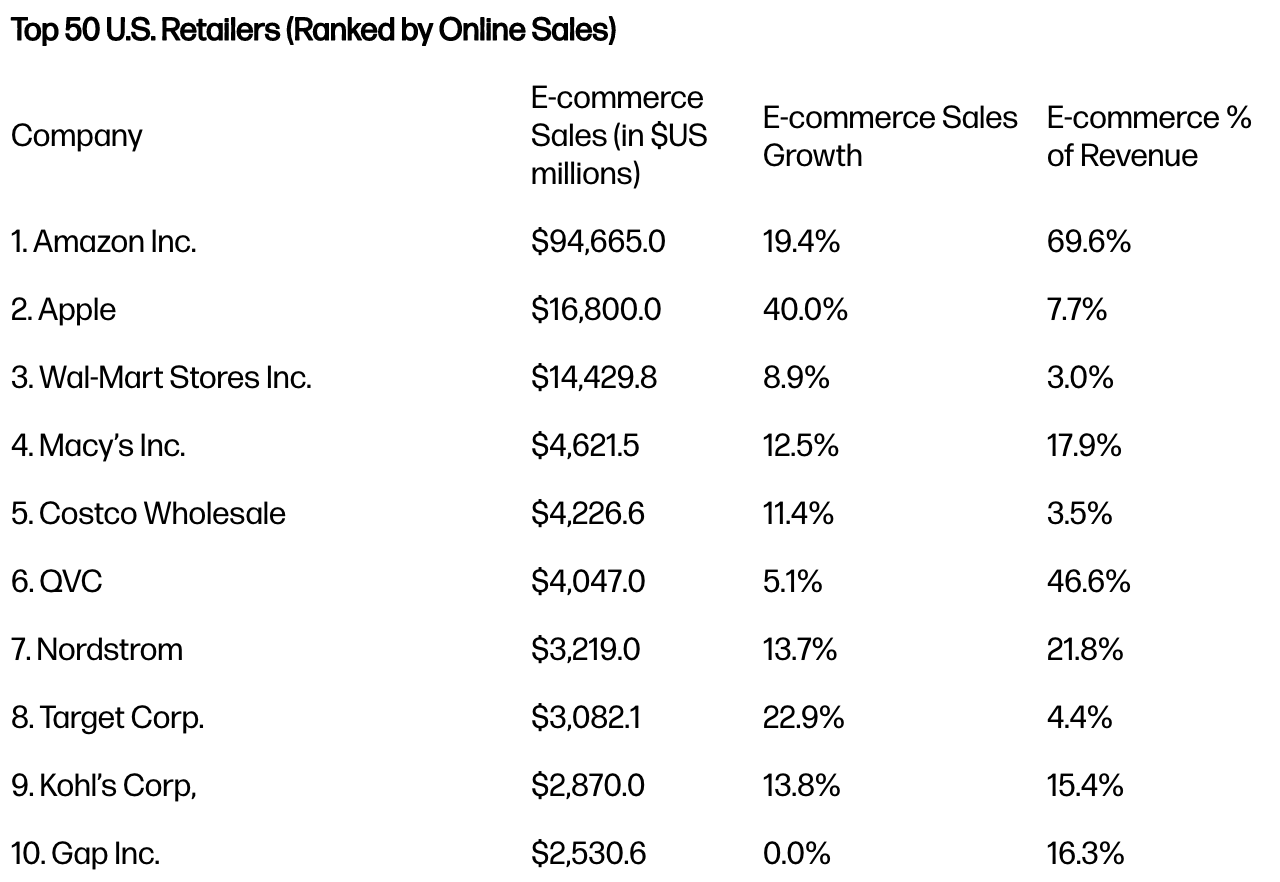
When I read other articles about ecommerce link building during my research, I found the same tactics over and over again. With this article, I want to show new tactics and go beyond the fluff (e.g., “build a great brand”).
I looked for actionable tactics. And I found them.
After all, link building is all about value. Why would someone link to your site? You need to offer them value.
I’ve clustered the link-building tactics I found into four categories:
%(tableofcontents)
(A word of caution: paid links [without a nofollow attribute] or backlinks from widgets are extremely dangerous nowadays. They are easy for Google to detect, you run the risk of your site being penalized, and you’ll have a hell of a time unbuilding these widget links.)
How Apple, Amazon & Sephora Build Backlinks With User-Generated Content
User-generated content (UGC) is a great way to scale link building, but it’s also harder to control. People generally link to content created by other users rather than company-created content, as user-generated content often feels less commercial. On the other hand, it’s harder to encourage links to a specific page.
When compared to other tactics, UGC comes out as one of the most efficient.
1. Build A Community
The benefits of building a community around a brand go way beyond SEO. Major brands use communities primarily to foster loyal audiences, with backlinks a welcomed byproduct.
However, people may be more likely to link to UGC in web forums because:
- It seems less beneficial to the company (as opposed to linking to a product page)You often find good content in web forums.
Apple’s forum has lots of backlinks from Wikipedia—one of the best sources for links you can get and one of the hardest.

Even when big sites link to Apple’s forum in a negative context, it can be helpful. A link is a link, just like in this screenshot from Wikipedia to Apple’s discussion forum below.
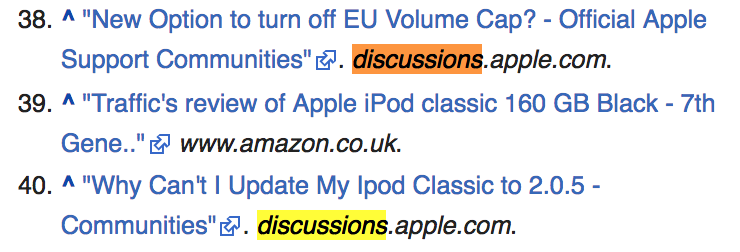
For big publishers like The Guardian, Apple’s forum is a goldmine for stories.
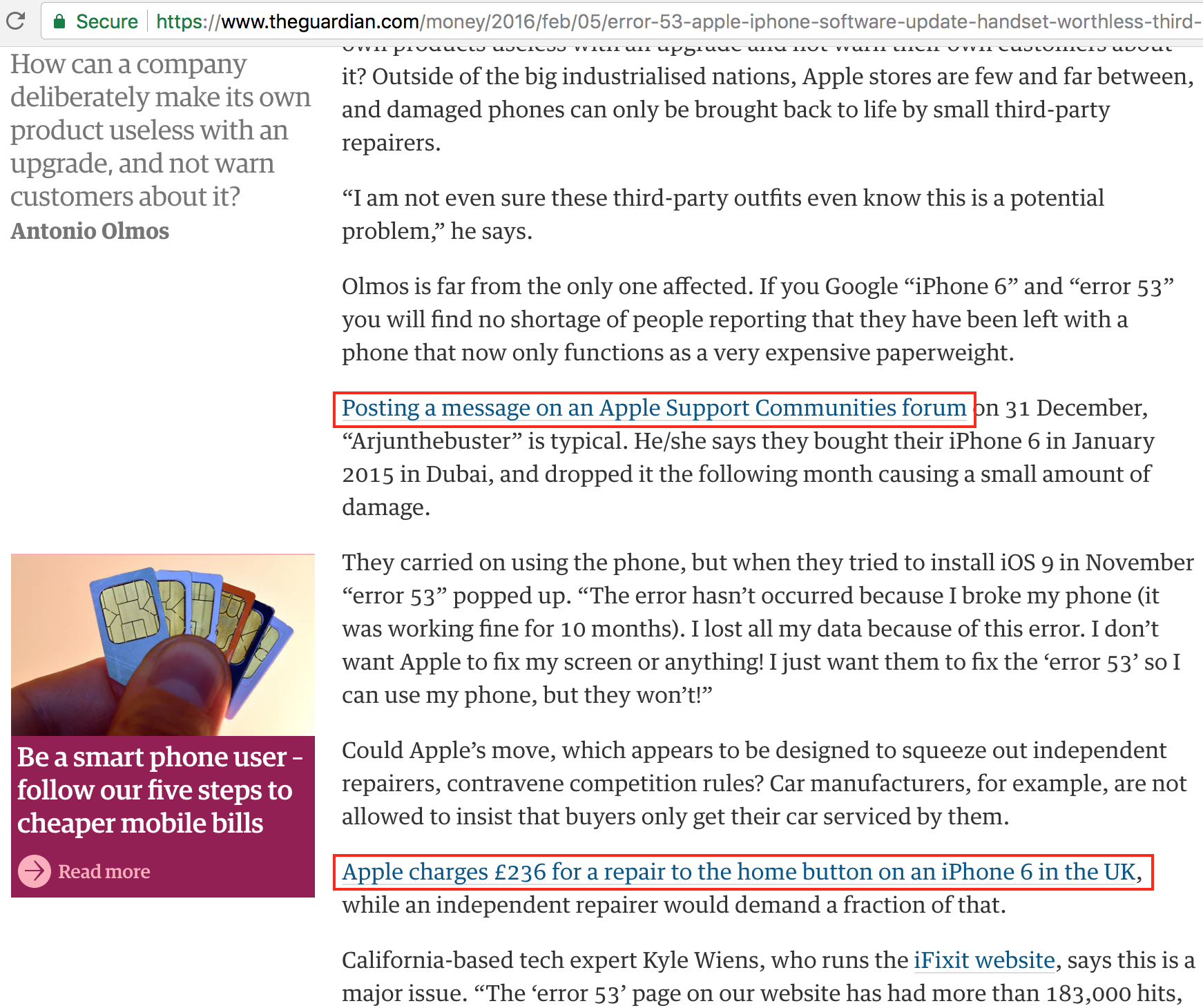
The Apple forum community has acquired over 6 million backlinks so far!
Communities take time and effort to get started, but once they’re running, they can be good sources of backlinks. It sets the stage a bit for how link building in 2018 works: the most effective tactics don’t come easy or quickly.
EBay built a knowledge base on top of its community—with big success. It collected over 1 million backlinks.

EBay’s community is similar to Apple’s: news outlets search for stories in the forums and then link to them. That’s the benefit of facilitating a web forum for link building: you provide a stage for a free flow of information that can be attractive for news and journalistic coverage.
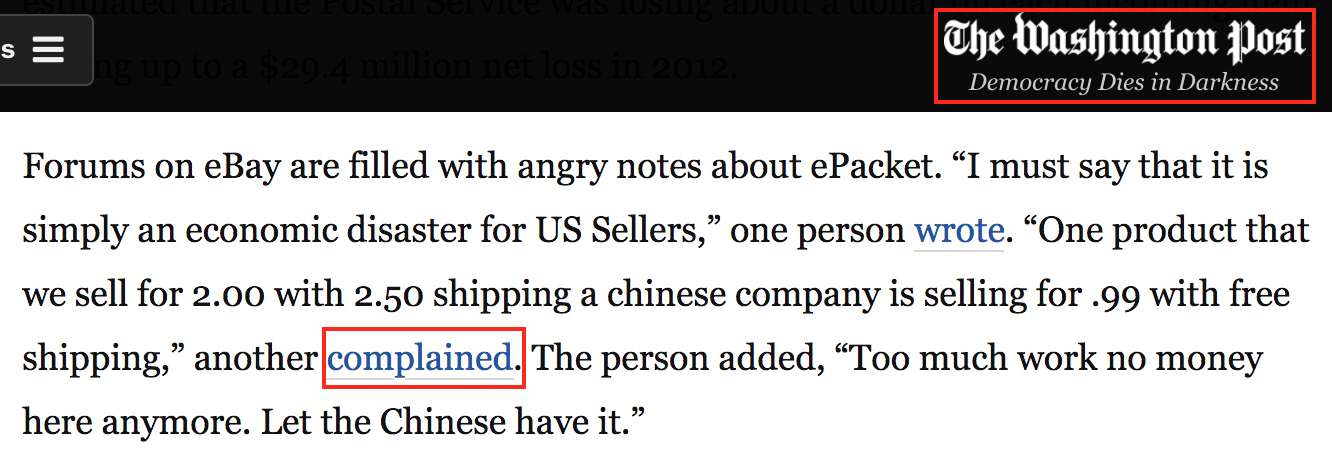
Another way to foster a community is offline: Amazon Web Services (AWS) has “user groups” all over the globe. Amazon elegantly gives those offline events an online platform on meetup.com.
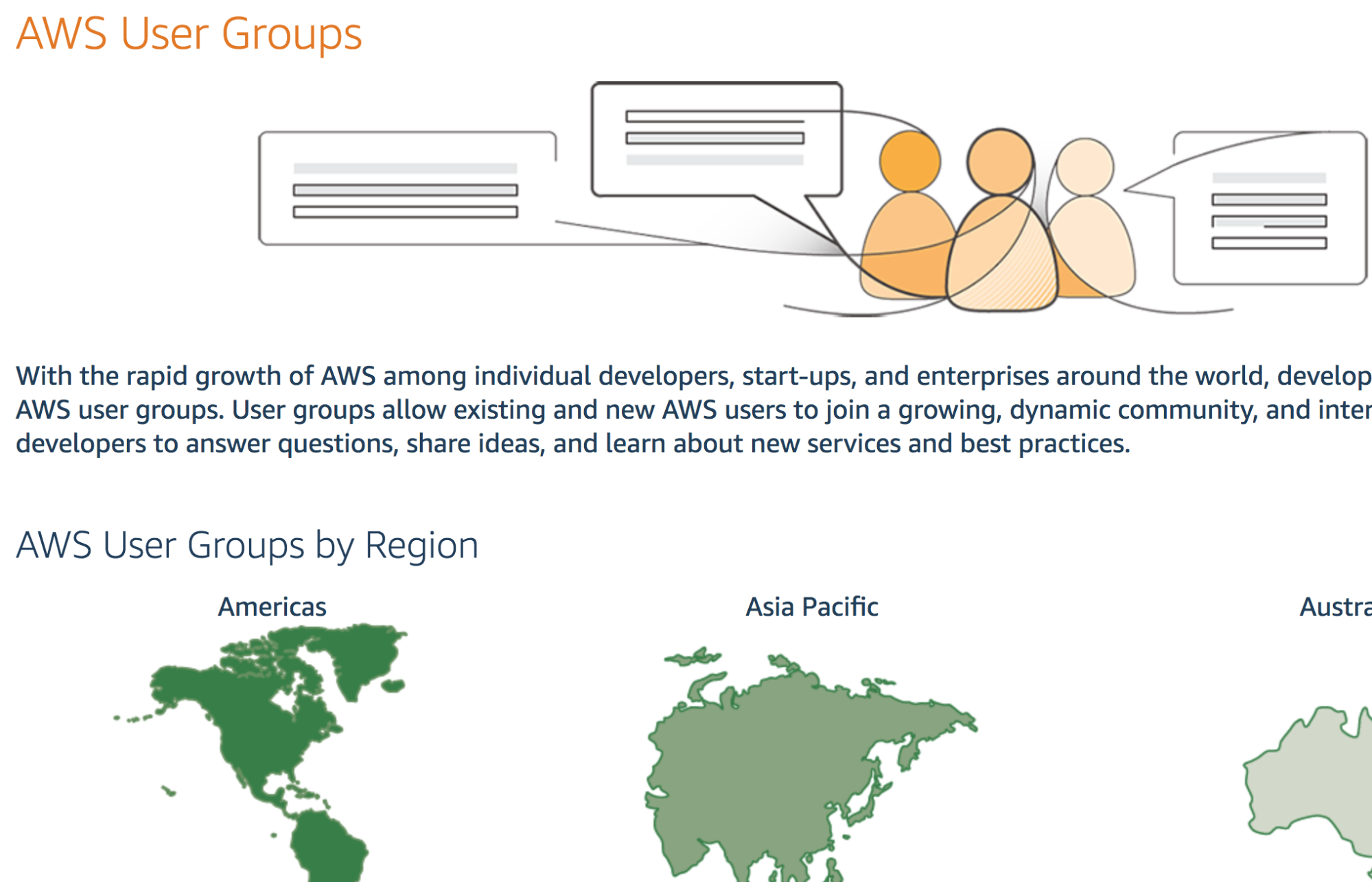
Of course, the loop is closed by the Meetups linking back to AWS. There are over 20,000 links from meetup.com to aws.amazon.com, and they’re all “dofollow” (as opposed to “nofollow”, which means that Google doesn’t follow the link and it doesn’t provide as much value).

The second piece of AWS’s community puzzle is Reddit. The AWS subreddit has over 28,000 subscribers (who don’t hesitate to link back to AWS).
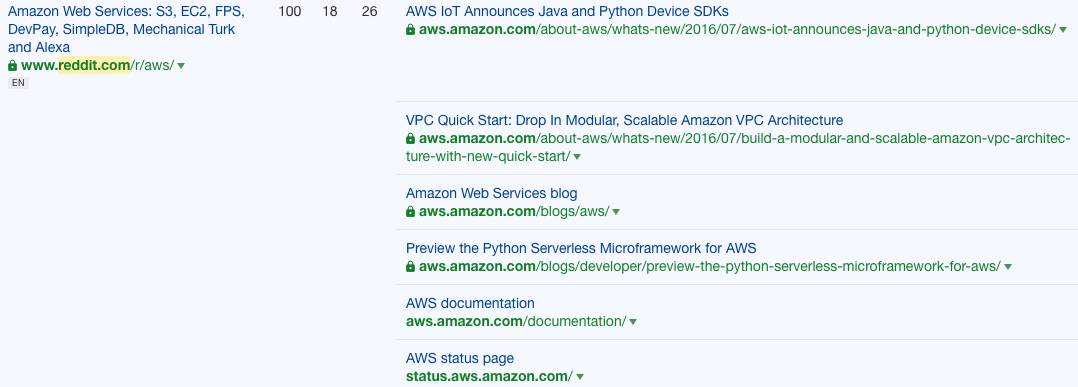
Sephora built its own community that’s just shy of 2 million backlinks.

The community is very engaged. Some of the top posts get over 1,000 replies.
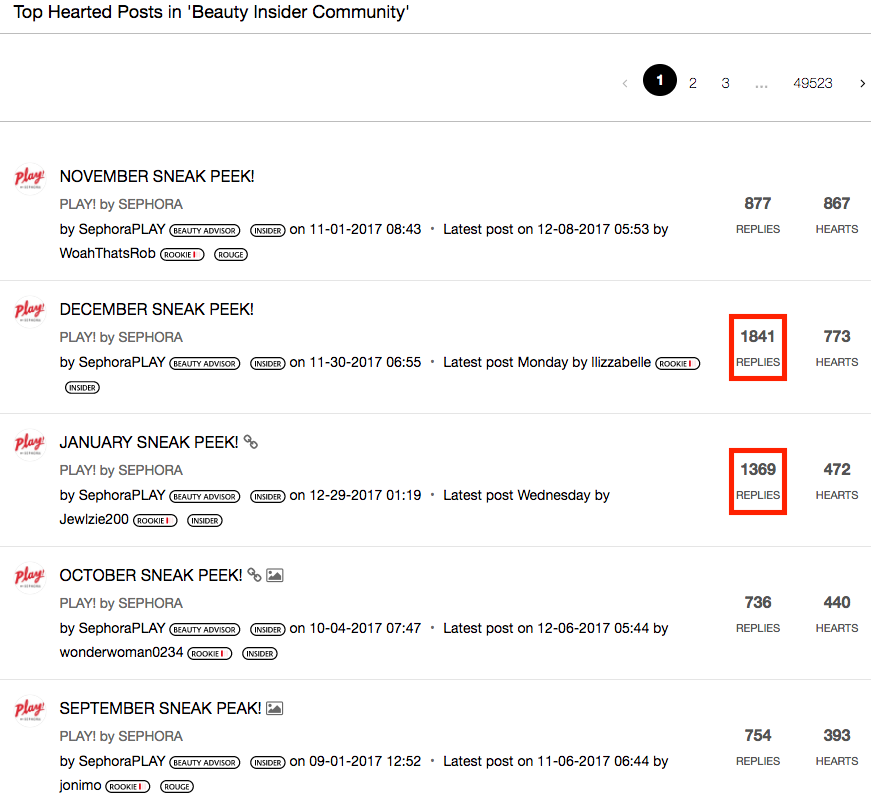
From the outside, we can count at least 50,000 members (2,502 pages of members with 21 members listed per page).
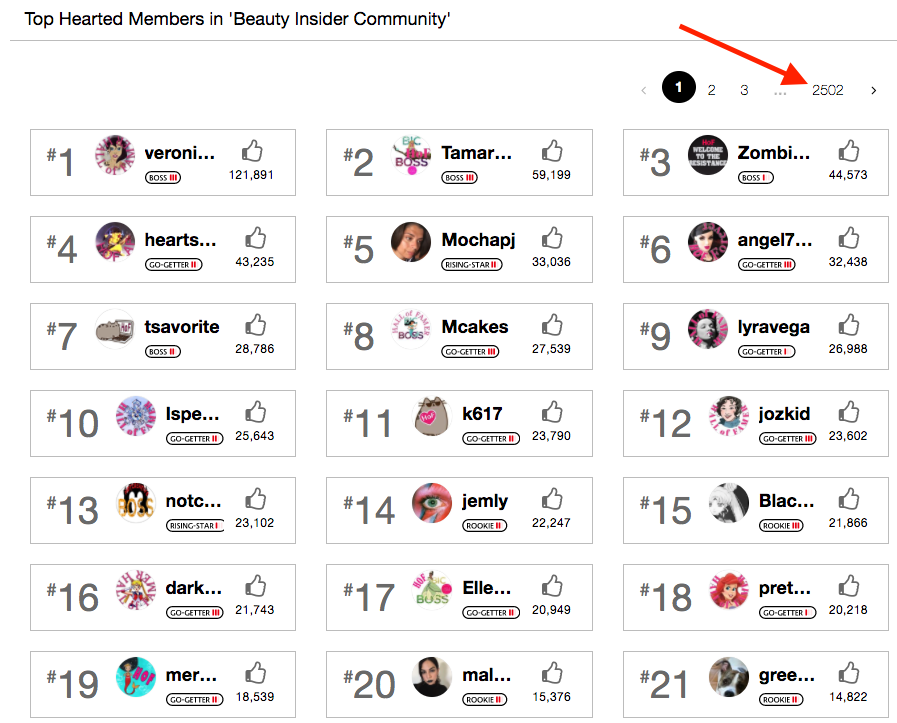
No surprise that Sephora community members spend 2.5x more on the brand’s products than other customers.[*]
How you can build backlinks with user-generated content:
- Web forums are the best community platform to get links, but you have to actively build the community. It’s not enough to just add a forum to your site. But when you add one, it sets the stage for publishers to link to discussions and keeps your customers close to your brand.
- Leverage other, existing communities, like subreddits or Slack channels. Try to build a bridge between your community and other, bigger communities because it will strengthen and build yours.
- Help users who want to link to your products (but do not actively ask them to do so), for example by providing them with widgets they can embed on their website. This will transfer the link juice to your important landing pages.
- Make it easy for users to find a shareable URL for your product, so they use that URL on forums, Facebook, and so on.
- Integrate a forum into your support, FAQ, and knowledge base systems.
- If you can’t or don’t want to set up a web forum, chose a platform like Meetup for offline events or Reddit for an online community around your brand.
How Dollar Shave Club, Sony & ThinkGeek Generated 1,000+ Backlinks On One Page By “Catching Attention”
Catching people’s attention is an accomplishment in itself in this time of content abundance and attention shortage. After all, selling products and building backlinks both revolve around human psychology.
There are four ways:
- PR stunts
- Memorable products
- Seasonal landing pages
- Newsjacking
2. Use PR Stunts
A glorious online PR stunt comes from Dollar Shave Club.
People certainly loved it. There have been over 25,000,000 views since it came out.

Just this one video on YouTube attracted over 5K links and 500K shares on Facebook for the site.

A PR stunt can also be as simple as a landing page with great visualizations or statistics, as shown by CEWE Photoworld. It was upvoted on Reddit over 1,000 times, got over 100 comments, and coverage from Mashable, Tech Times, and others.
Their interactive landing page about the size of Instagram is just the type of creative content that makes it attractive for news outlets to link to.[*]
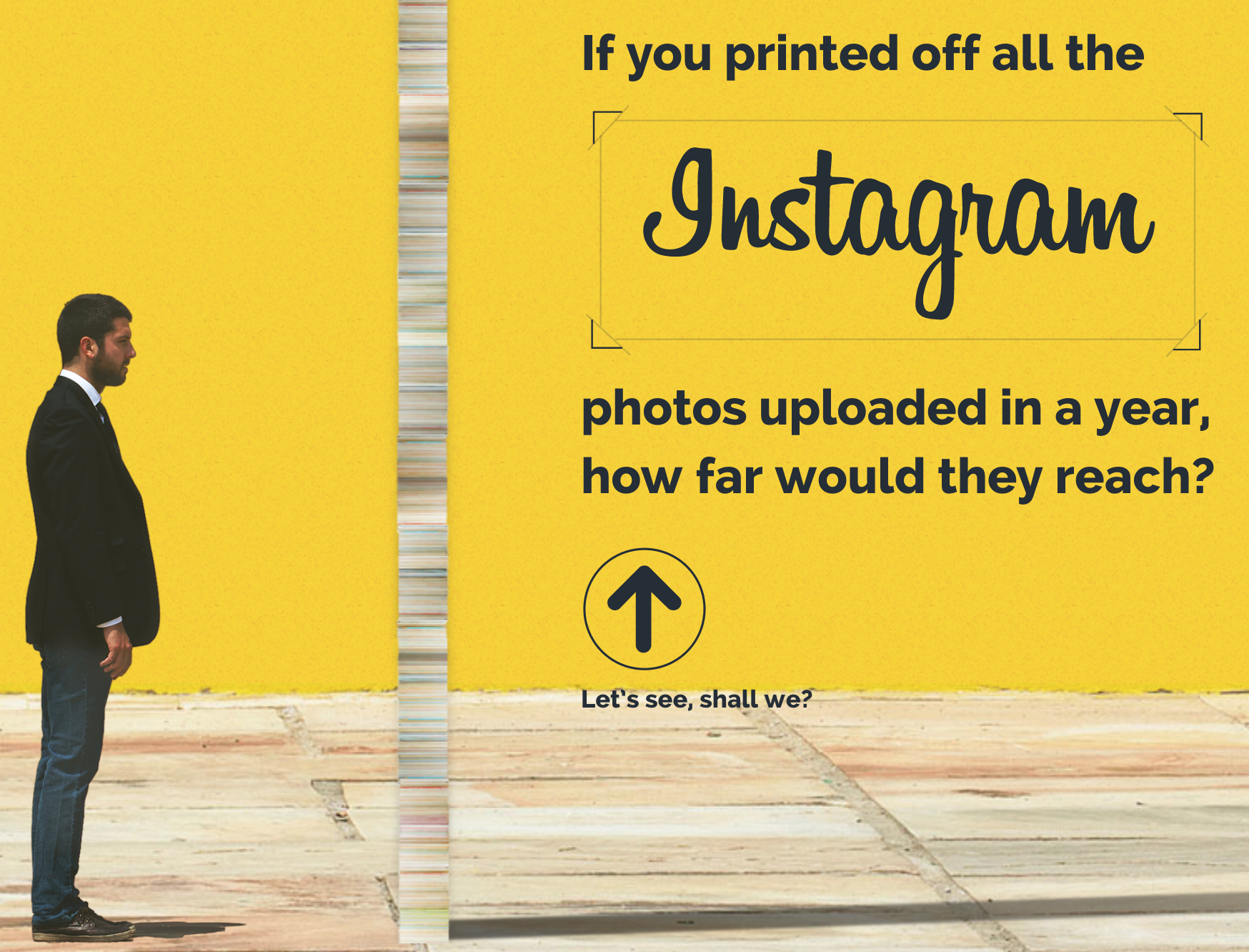
It received almost 300 backlinks and ranks for over 600 keywords.

As long as the content is original, relevant to a lot of people and evokes a strong emotional reaction, such as fascination or laughter, it spreads and can make a brand famous (almost) overnight.
When you pull a PR stunt, do not forget to set up a landing page for it, especially if it happens offline or on another platform (like YouTube).
Warby Parker pulled a PR stunt for the New York fashion week in 2011 but hadn’t set up a landing page for it. Many big publishers reported about it, including Glamour, Esquire, and Vogue. However, it would have been optimal to set up a dedicated landing page for the campaign, instead of having the links point at the homepage.
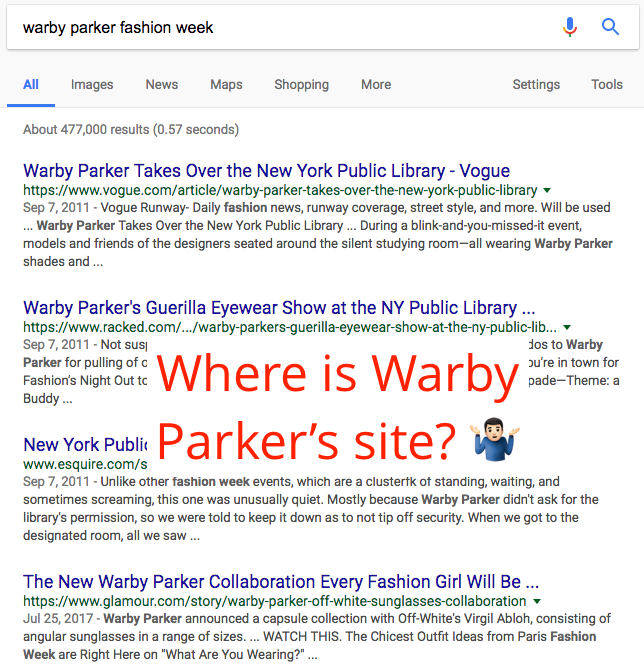
For manufacturers with an online shop, sometimes a cool landing page can be enough. Sony has an interactive landing page for its “be moved” campaign, which showcases the cooperation between artists and engineers for Sony’s products.
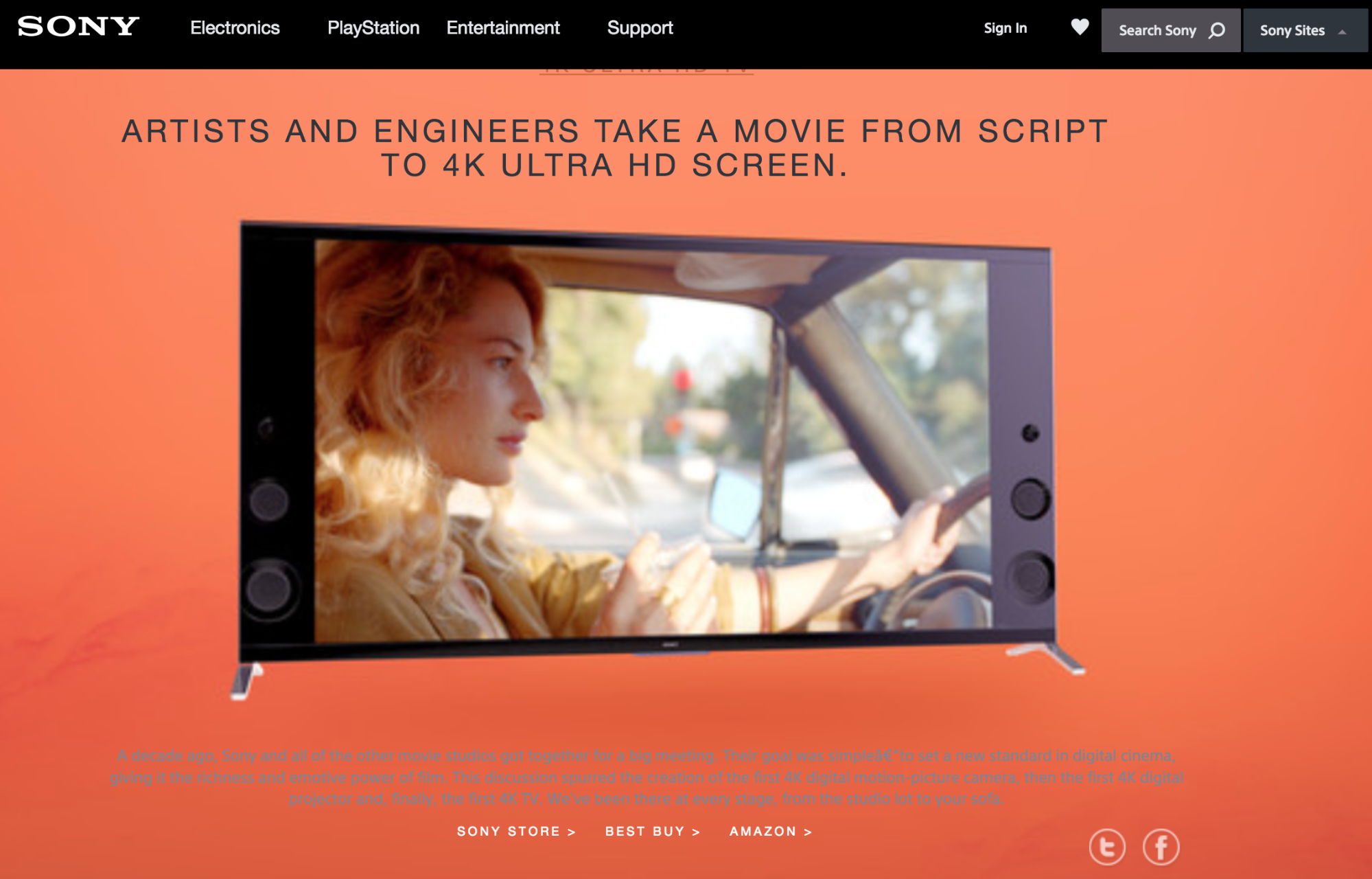
The page accumulated over 1,000 backlinks.

3. Make Your Products Memorable
The second most effective attention catcher, and one of the most effective link building tactics in ecommerce, is memorable products.
Wish offers a zombie shopping mall experience, for example, that has attracted quite the attention over the years.

That single page brought in more than 500 backlinks.

Another famous example of an outstanding product is Warby Parker’s monocle.
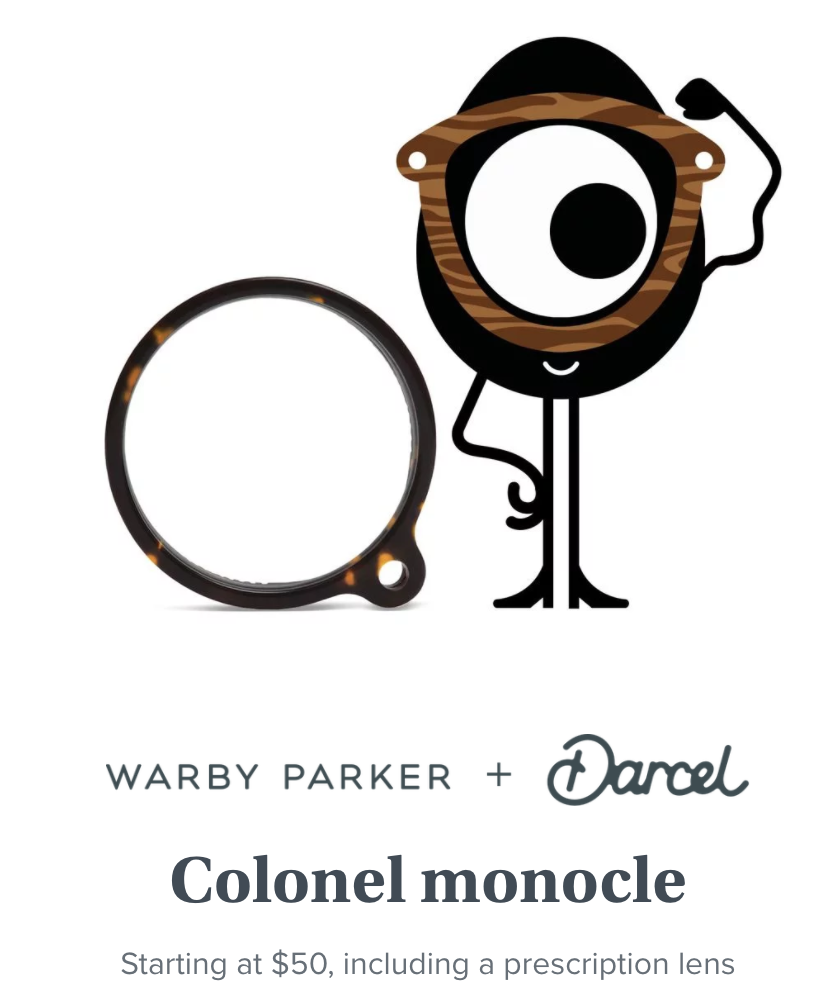
With over 500 accumulated backlinks, the product got coverage in publications from Wired and Buzzfeed to the Atlantic.

Neil Blumenthal, co-founder of Warby Parker, points out that the Monocle is the worst selling item but “creates a sense of surprise in customers while maintaining an intuitive connection to our core products.” It’s part of Warby Parker’s brand. Something to talk about, something that surprises customers.[*]
Besides a blog article, Warby Parker created a whole blog just for the Monocle (darceldisappoints.com, kudos to Keri Morgret for finding it).
This site alone has received over 20,000 backlinks, amongst others from sites like AskMen, Designboom and Hypebeast.

ThinkGeek, an ecommerce store for geeks, offers “canned unicorn meat.”
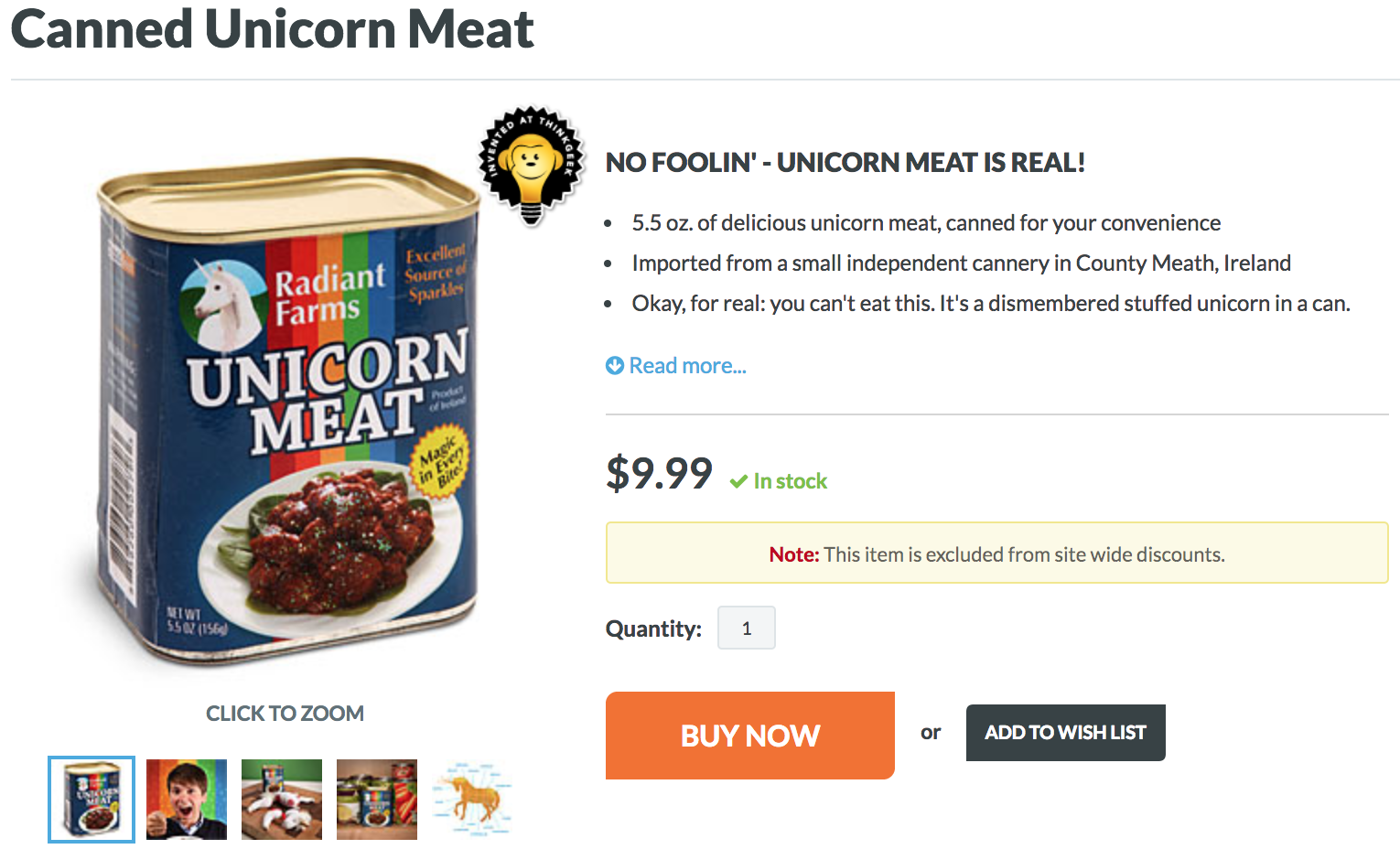
They received almost 5,000 backlinks with this one product and got 400 comments on Facebook.

Note that the landing page is more than just a product picture and headline. ThinkGeek wrote a short 500 word article for the page with illustrations and more pictures. They really spun out a story around the (initially) imaginary product, which makes it so much more effective. So effective, in fact, that ThinkGeek went from having it as an April Fool’s joke to selling it as a real product.
4. Create Seasonal Landing Pages
Seasonal events receive a lot of recurring attention, and some brands understand how to capitalize on that.
One of those brands is Macy’s: They have a set of pages about holidays, from Christmas to Thanksgiving to the Fourth of July. You can even explore Macy’s 4th of July parade online on an interactive landing page.
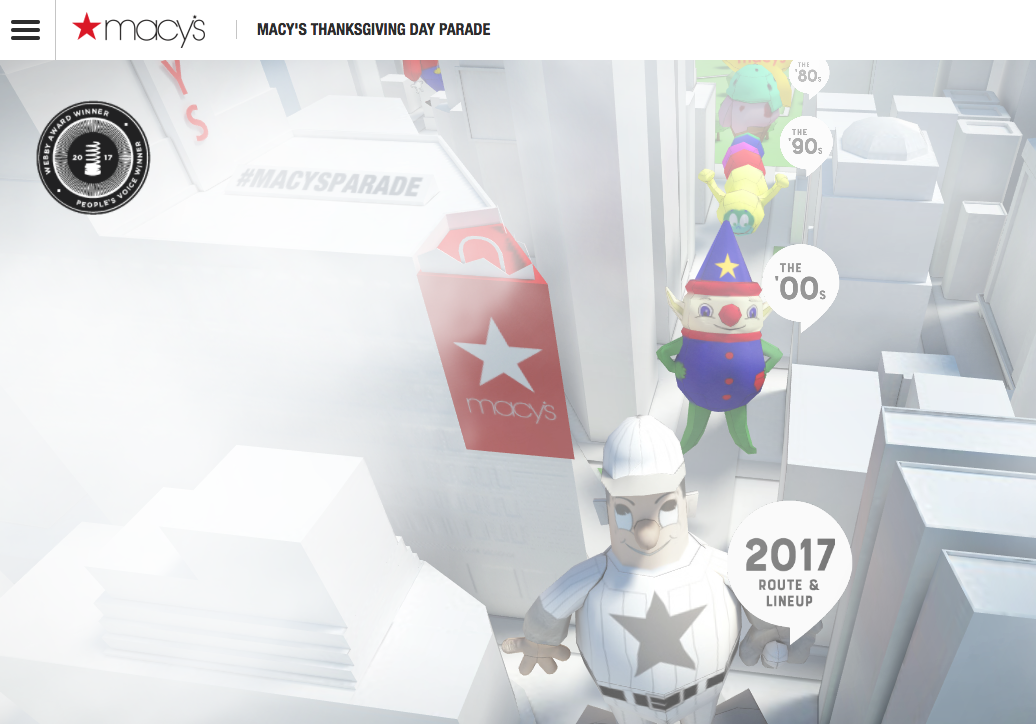
The Thanksgiving Day Parade page has almost 3K backlinks; all Macy’s holiday landing pages together generate the brand more than 20,000 backlinks.

Of course, every ecommerce business should have a dedicated landing page for Black Friday, Cyber Monday and Single’s Day.
Target’s Black Friday page has over 30,000 links.

Amazon’s Cyber Monday page has over 11,000 backlinks.

Best Buy’s Cyber Monday page has almost 3,000 links.

What makes these pages so successful in link building?
- They are available all year round and the URLs don’t change, so they acquire a lot of “trust” and backlinks over time. Outside of Black Friday or Cyber Monday season, they promote other hot deals.
- They serve as hubs to offers and specials. They’re not just an ad for Black Friday, they’re the starting point of people’s buyer journey for this occasion.
- They are prominently linked on the homepage (around the season) and promoted in newsletters. This exposes them to an initial audience that multiplies every season.
But there’s another way: the anti-Black-Friday movement.
REI’s “OptOutside” page was born out of an encouragement for companies to give their employees one day a year to spend outside—on Black Friday.
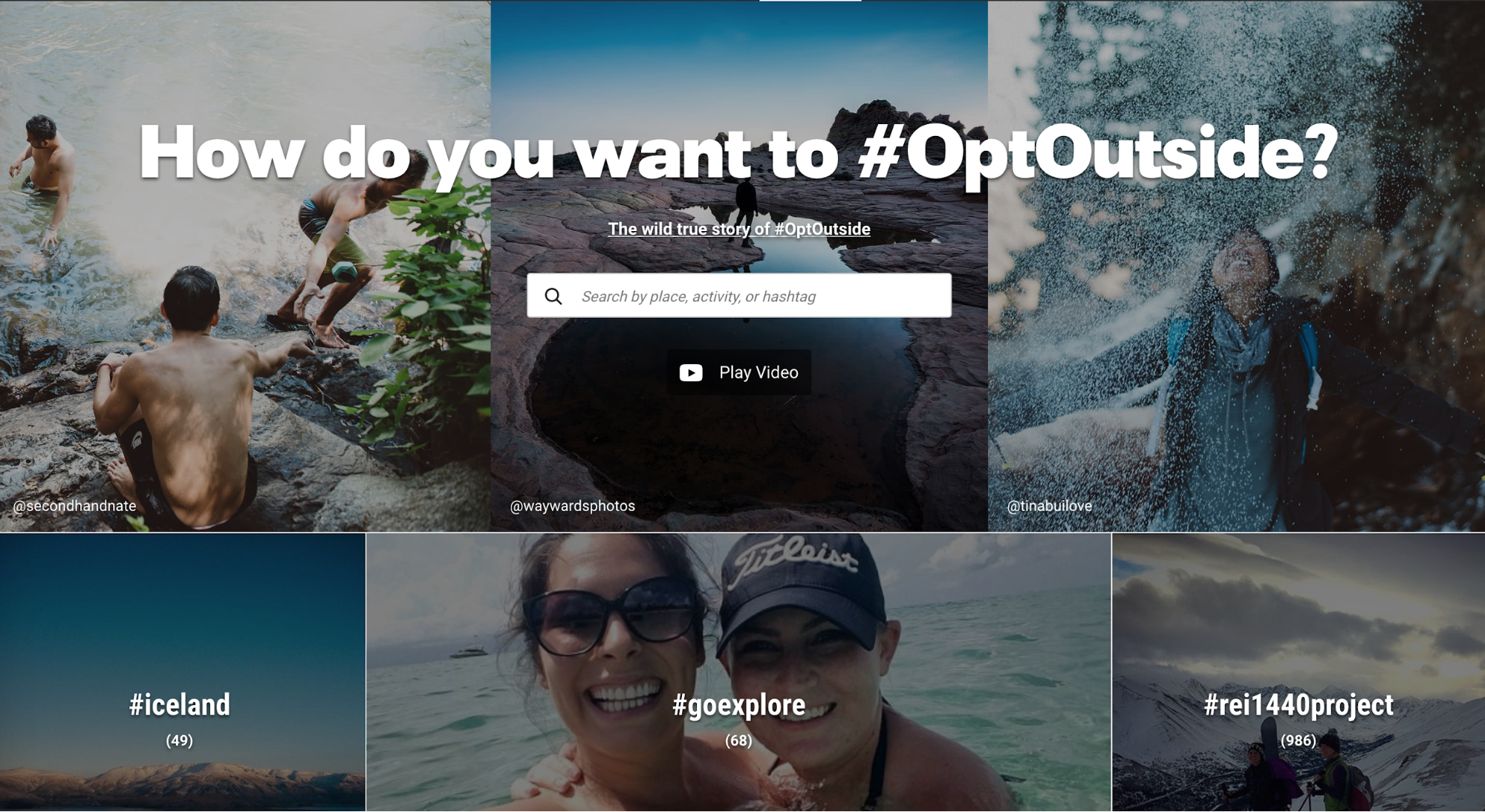
This one page is now a huge collection of Instagram photo galleries of participants in the “anti-Black-Friday” movement. It serves both, being visible for the topic Black Friday and strengthening the community around REI. It has over a million links!

Get My Free Guide On How To Research Seasonal Landing Page Ideas
5. Newsjacking
The last attention catcher is “Newsjacking”—riding the wave of a hot topic in the hope of becoming part of the conversation. A famous example is Oreo’s response to the 2013 super bowl power outage, which received a lot of attention on social media.
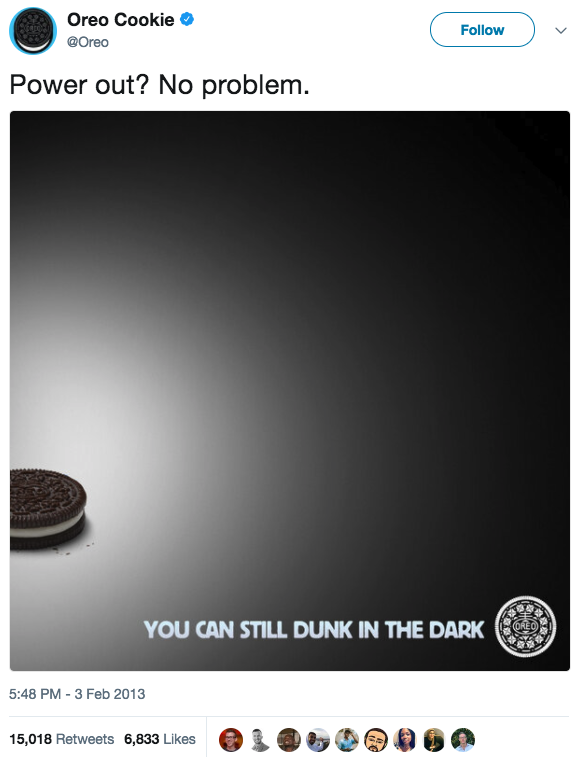
As an online retailer, you sometimes have unique data or opinions about some topics, which you can either provide in the form of a blog post or a landing page.
Warby Parker rode on the wave of the Solar Eclipse 2017 and created a contest around the topic.
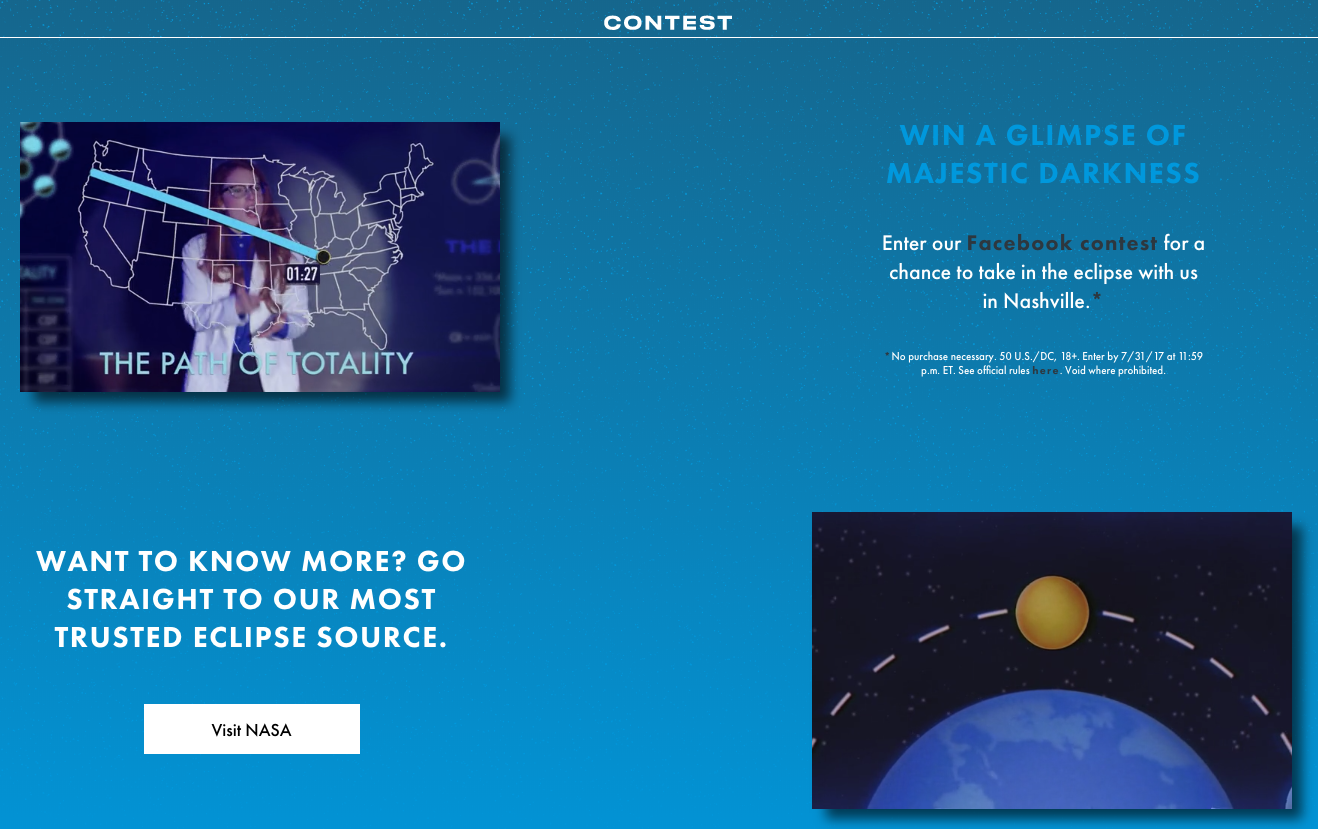
The landing page has since received over 200 backlinks.
Apple does something similar with the Steve Jobs memorial page.
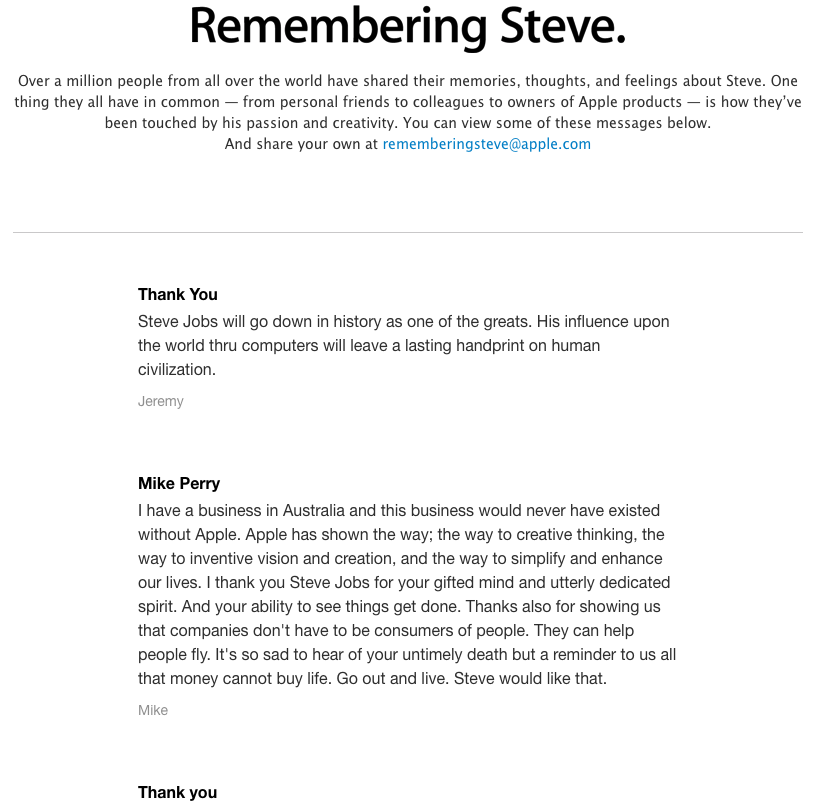
Surely, the page wasn’t set up primarily to gather backlinks, but it contributes to an ongoing buzz, similar to hijacking a current topic. The Steve Jobs page has accumulated over 200,000 links!

Every year on the day Steve Jobs died (October 5th) it will be in the news and searched for; some years more than others, as Google Trends proves.
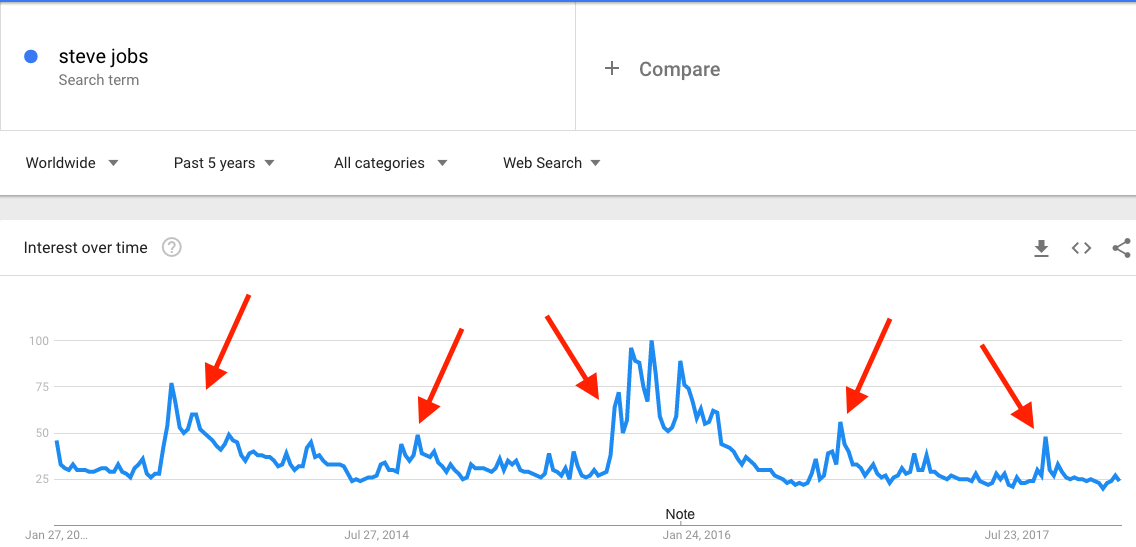
How you can build backlinks with attention catchers:
- Keep an eye on trending topics and products on Google Trends. When you spot a trend you can contribute to, create content around it ASAP.
- Set up a landing page for all big online retail days, e.g., Black Friday, Cyber Monday, Single’s Day. Even if you don’t participate in it, you should think about a way to set up a landing page around the topic.
- Seasonal landing pages should be live all year round and if possible under the same URL. Google gives URLs “trust” over time, and constant availability plays an important part. If the URL is constant, you also benefit from the collected backlinks every time the season comes around.
- If you’re a retailer, look at your best-selling product and create a “fantasy version” of it. If you’re a manufacturer, think of your most geeky consumers and what type of imaginary product they always wanted to have. As a watchmaker, it could be a James Bond watch that shoots little missiles, for example. Sending one simple email to your email list could be enough to kick-start the viral spread of your imaginary product.
How Walmart, Warby Parker & Shoe Palace Give Away Products To Get Backlinks
Giving away in any shape or form addresses another part of human psychology: people love free stuff! The idea of “making a bargain” makes people feel like they have an advantage over others, which is deeply rooted in our evolutionary drives.
If done right contests, sweepstakes and free giveaways can be door openers. They give prospects a taste of the product, which can result in more sales for the business.
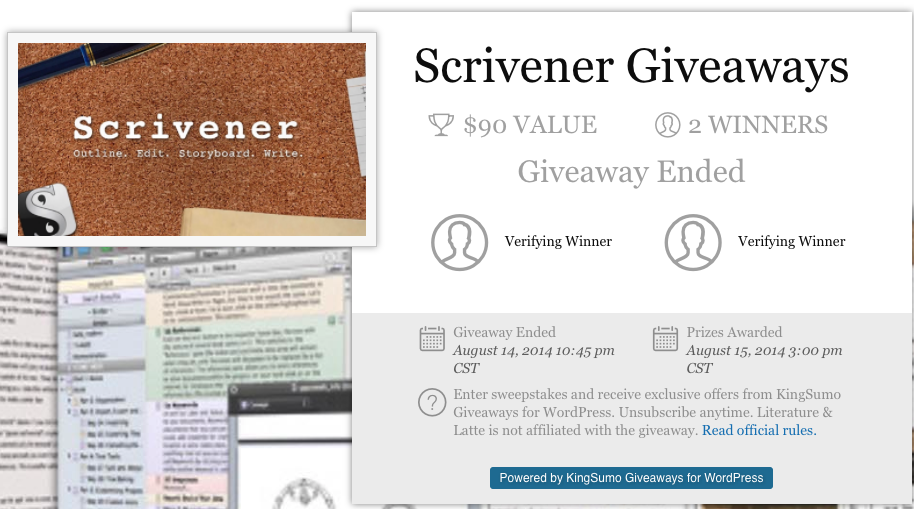
If you’re curious how to run such a giveaway check out KingSumo.
On the flip side, having people see you giving to others is also very powerful. It leaves an emotional impression of generosity. That’s why people love to link to charity projects and pages.
6. Give Back To Charity
“Macy’s gives” is a landing page for the company’s charity projects and volunteers.
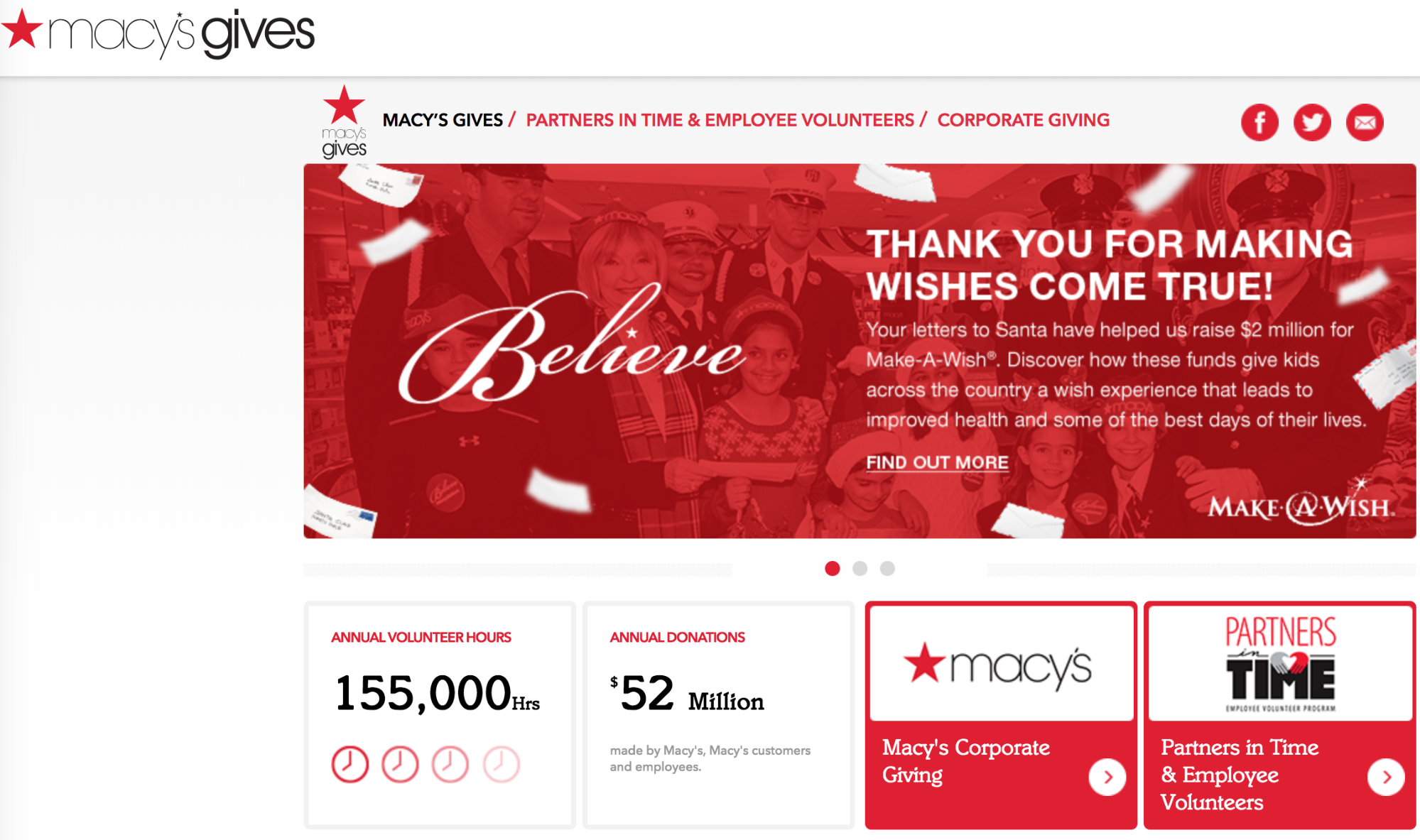
It has over 4,000 backlinks, mostly from the communities that received the volunteer work or charity donations.

Links from nonprofits and charities are often very powerful because they often have a lot of authority and inbound links. Publicly donating to a charity organization is powerful because you can often get a link back.
Warby Parker has a similar campaign: “Buy a pair, give a pair.” The landing page elegantly addresses the emotions of visitors and explains the impact they can make with a donation.

It has a bit more than 2,500 backlinks.

Some links come from big publishers, such as the Huffington Post.
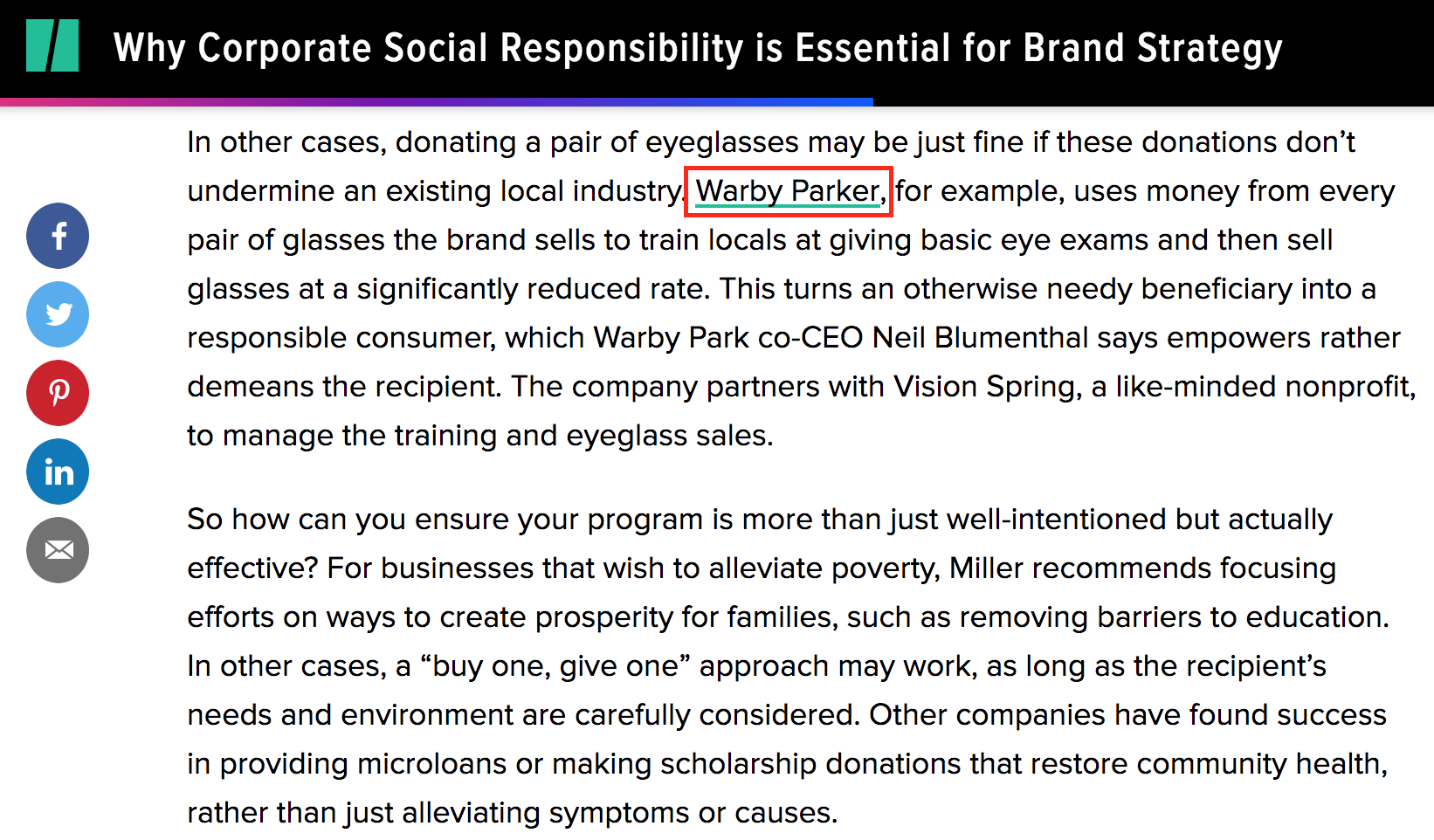
Walmart’s foundation page has accumulated over 2,500 backlinks from all kinds of charity organizations.
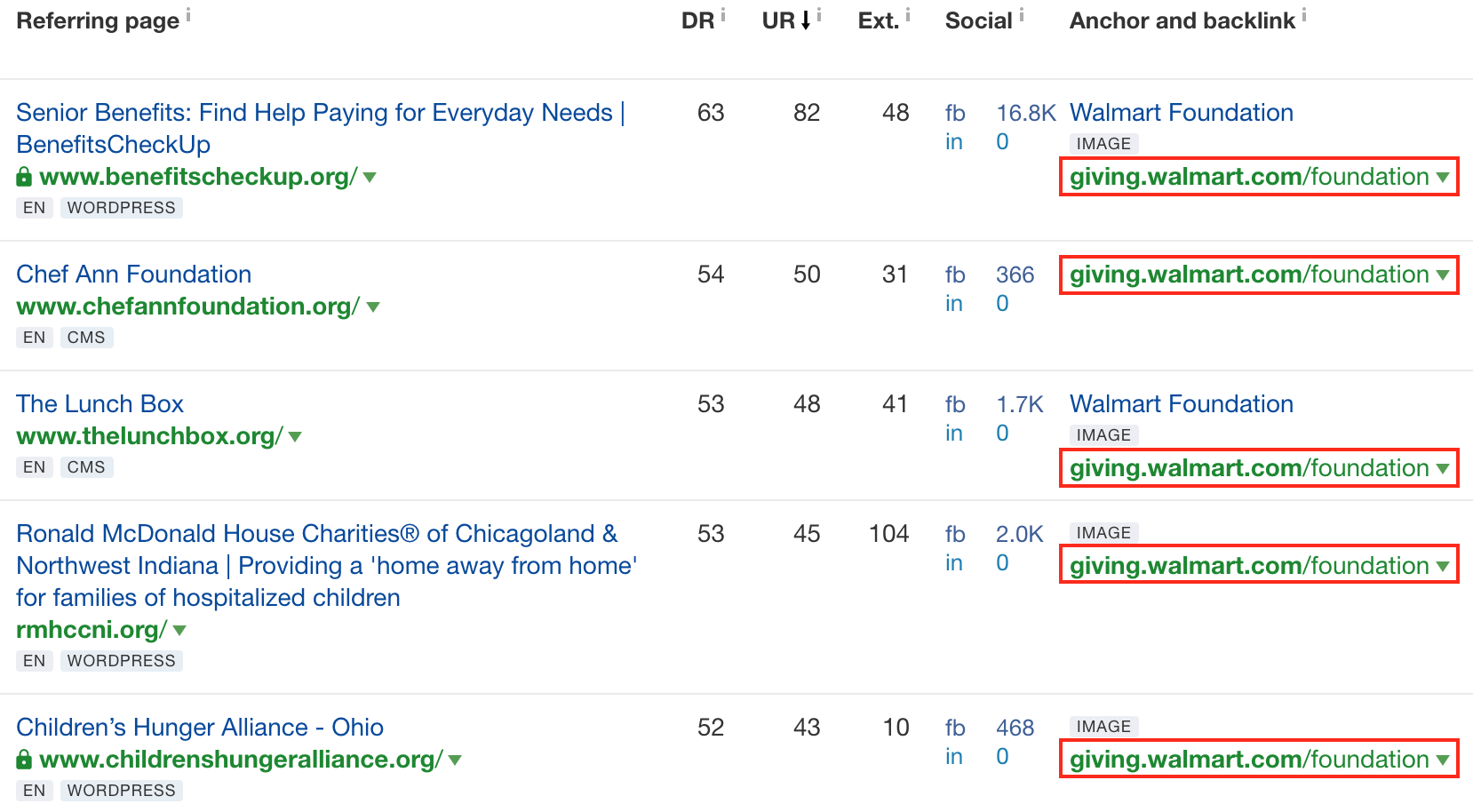
Just to be clear: I don’t assume that charity is done for the sake of backlinks. Links are a byproduct of charity. By implementing a program and making it visible to your audience, you can kill two birds with one stone.
7. Develop Sponsorship Programs
Sponsorships mostly apply to scholarships and grants. We just saw Walmart’s foundation in the previous example, but they’re also successfully getting links with sponsorships like Walmart grants (providing grants to nonprofits, communities, and students).

Their whole giving.walmart.com subdomain has over 130,000 backlinks!

Once again, these initiatives probably haven’t found their origin as a link building tactic, but can definitely be started as such. It’s a win/win!
AWS has a special program just for students and educators, with almost 2,000 backlinks.

Publishers love to write about school sponsorship programs because it’s very valuable to a young (kids going to school) and older readership (parents of kids going to school). Here is an example from The Next Web:

8. Offer Discounts
Targeted discounts for veterans, military personnel, students, and teachers give you the same “Halo effect” as sponsorships.
Many bigger online retailers offer such discounts, and their pages often receive a decent amount of backlinks.
ASOS’s student discount page (where they offer 10% off) alone has almost 400 backlinks.

Apple’s student discount for higher education page (where they offer products up to 15% off) has more than 30,000 backlinks.

The difference in backlinks surely has to do with the popularity of Apple’s products. But the bottom-line is that showing your support for others pays off.
9. Run Giveaways
One of the longest standing approaches to increasing awareness, getting valuable feedback, and building links is giveaways. Giving away products “for free” in a raffle or contest works because people love free stuff. Of course, to participate users have to sign-up with their email addresses, which you can then use for email campaigns.
Shoe Palace did a raffle for a chance to buy a pair of Yeezy shoes.
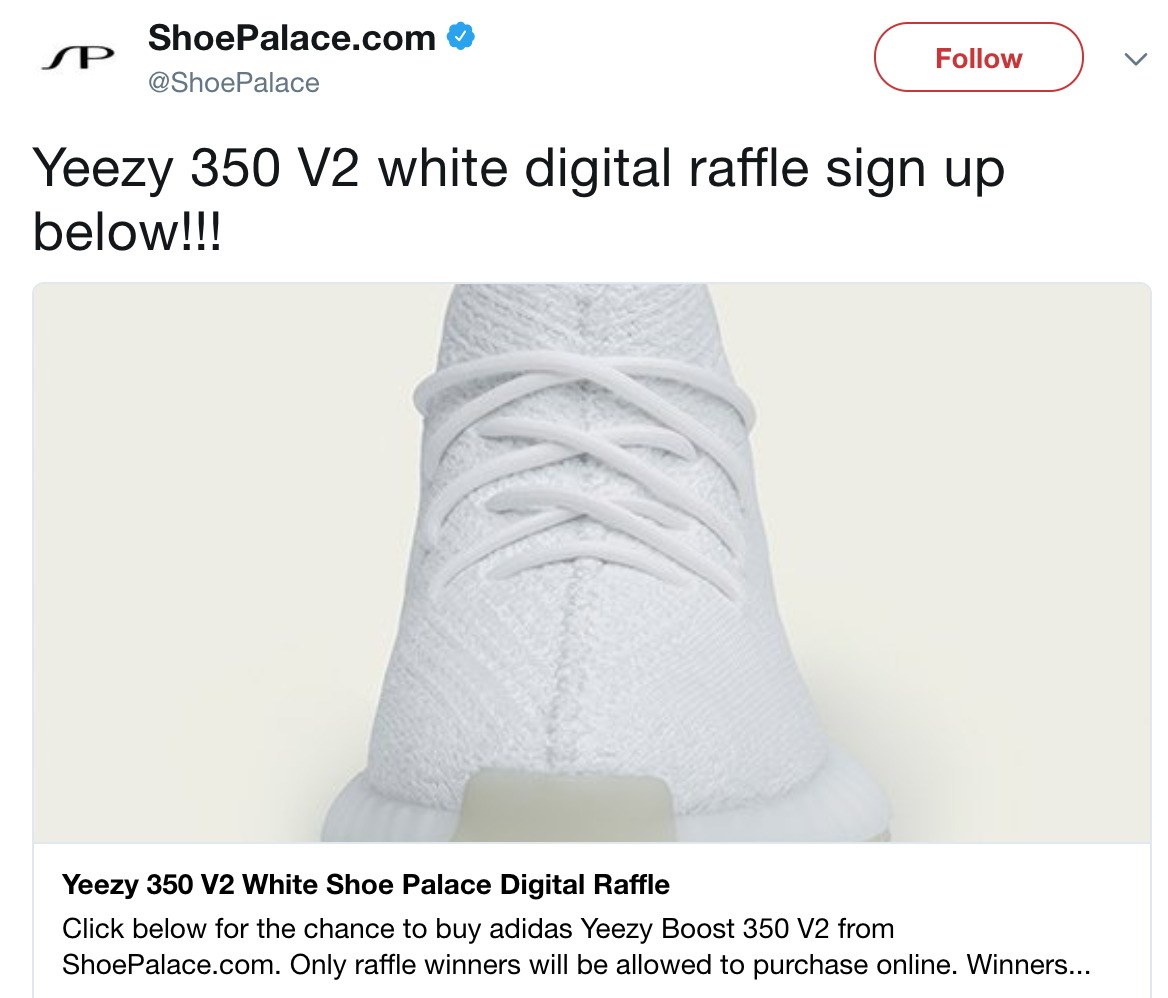
The raffle page itself collected almost 200 backlinks.
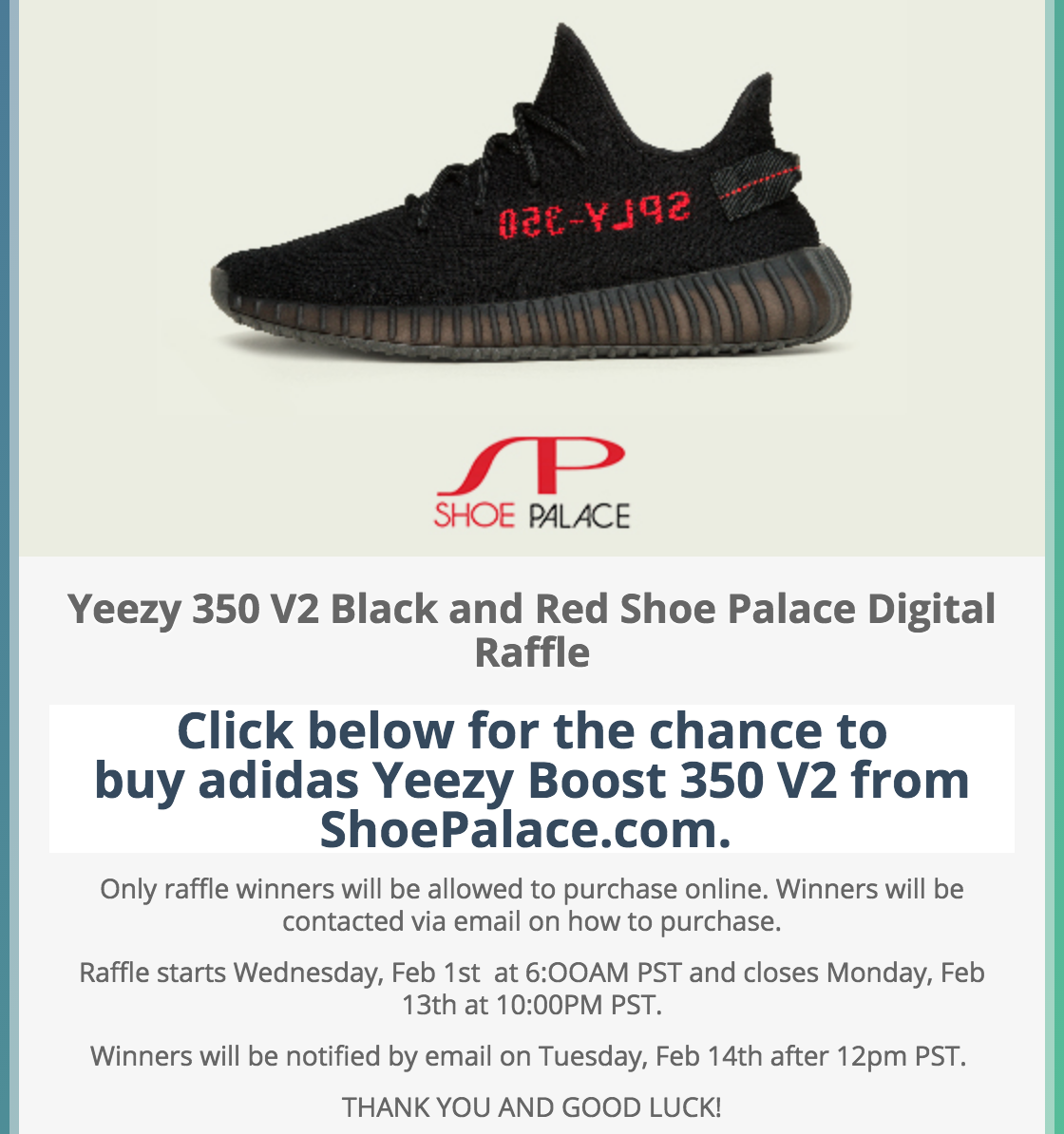
Using a third-party tool to run your contest can help make sure it follows all applicable laws. To benefit from links, have a landing page on your site that directs to your contest, rather than letting the third-party get all of the links.
KingSumo is a viral giveaway tool that allows you to create the contest landing page on your own site and follow all applicable laws.

The problem in reverse engineering the backlinks for giveaways is that most of them aren’t live anymore and some sites redirected the giveaway URL. But you can check the link anchor texts (the text that contains the link) that refer to a domain. When filtering Ahrefs backlink database for the anchor text “giveaway,” I found out that Zappos had received really good links with this tactic, for example from Amazon, Mashable, and well-ranked blogs.
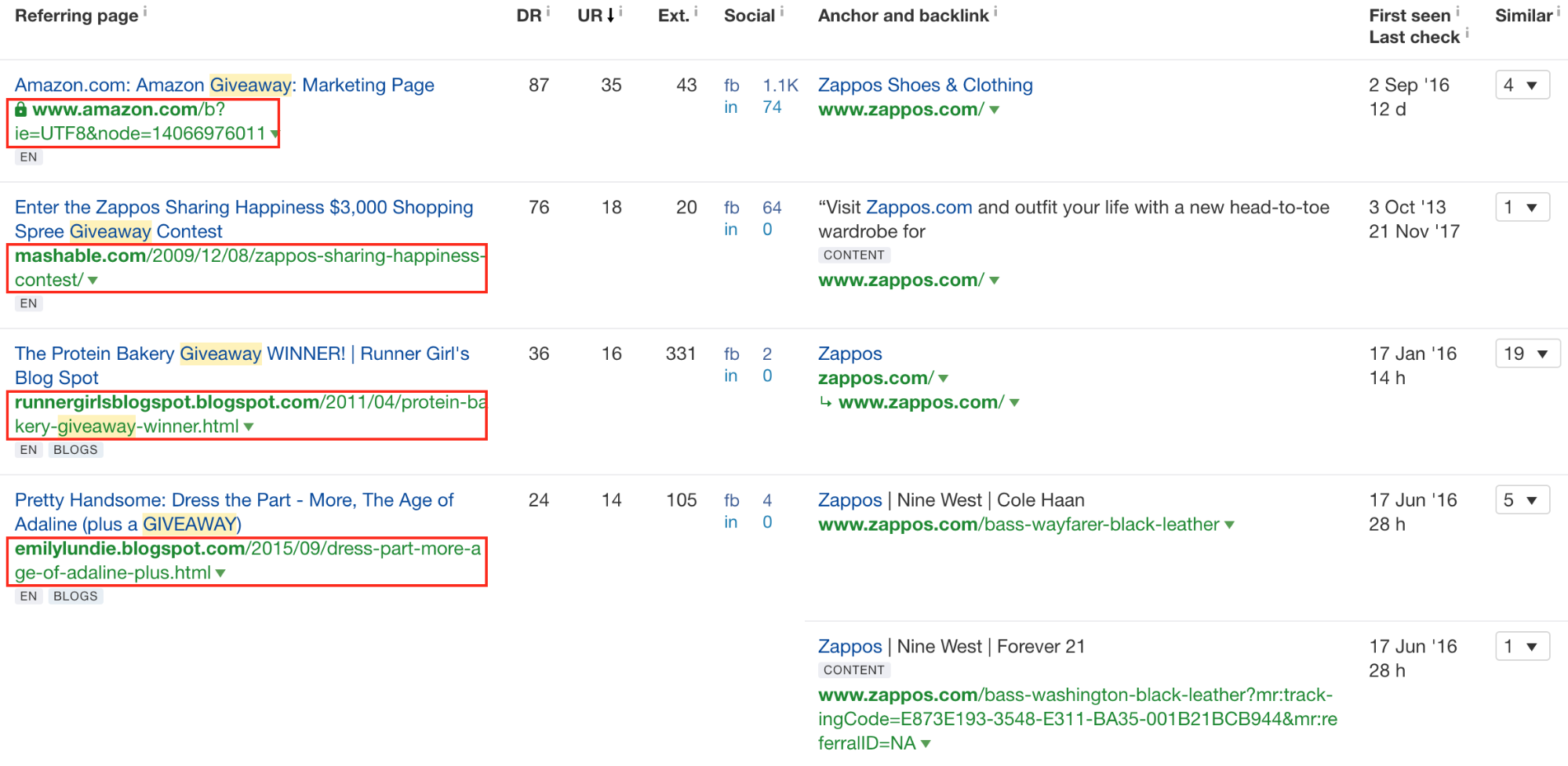
A word of caution: Avoid giving away products in exchange for links. Google penalizes that scheme. You can still send out products for reviews and if a link is set free willingly – okay! But don’t explicitly demand a link in exchange for a product.[*]
How you can build backlinks by giving away:
- If your company is big enough to give away school grants and donate revenue to charity and nonprofits – great! Make sure to give the program special attention on your site. Make your customers aware in newsletter campaigns and proactively advertise your program(s). Create a dedicated landing page on your site.
- Try out giving away special discounts for veterans and students and make that initiative just as public as your sponsorships. You should run the program for some time and then measure its effect.
- Try out online raffles and sweepstakes with KingSumo. Make sure to inform your target audience before the giveaway, e.g., via newsletter, and advertise it visibly on your site, e.g., with a banner on the homepage.
- Do not ask influencers for a backlink. Just send them your product with a handwritten card. Based on the psychology behavior of reciprocity, people feel the need to give you something back, when they received something from you. If you ask them for a favor (backlink) instead, you want something from them, first.
How Lululemon, EBay & REI Use Content Marketing To Get Backlinks
Informing users is about one thing: providing value. Your job as a brand isn’t done after you’ve sold a product. It’s actually never done, because you want to constantly provide value to your customers to keep them coming back.
The best way to provide value is through education and information (before they buy and after).
The opportunities for content creation are almost endless:
- How, why, and when to use the product
- How to get better at the thing you use the product for
- Exploring related topics to the product
- etc.
10. Create Useful Guides
Guides are the holy grail of ecommerce content. There are two types: buyer guides, which help you make the right purchase decision, and guides in the form of tutorials, explaining to you how to do something. The former is often used for higher-priced products and vice versa, but the two are not mutually exclusive.
Mountain Warehouse’ tent buying guide is a good example for a buyer guide.
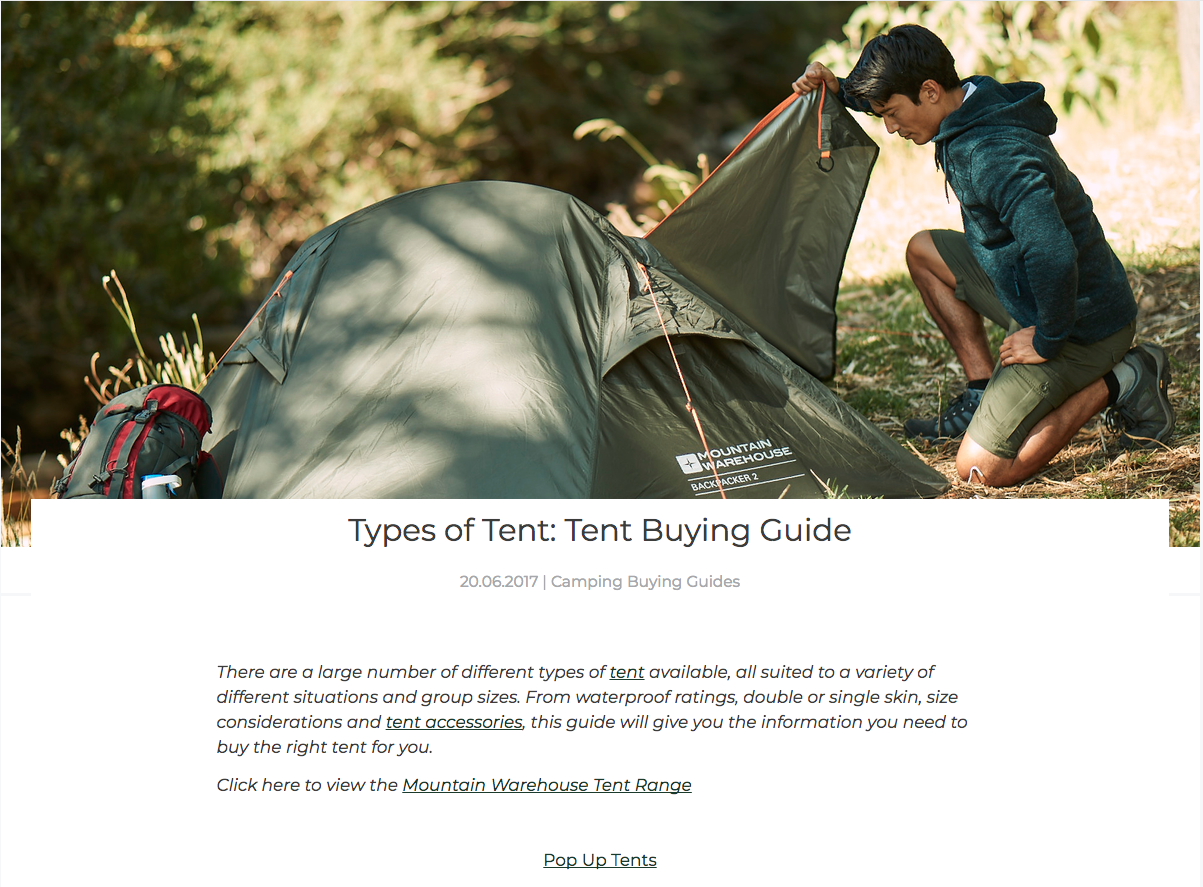
It’s very much on point because it covers all relevant steps in buying a tent in a concise way: what type of tents are there, what are they for, how are they different, and what the pros and cons of each are.
The page earned over 250 links so far.

But the whole expert advice section (where they have over 500 guides) got over 1,500 backlinks.

On the other hand, REI built a complete microsite around expert advice, which falls into the category of tutorial-like guides.
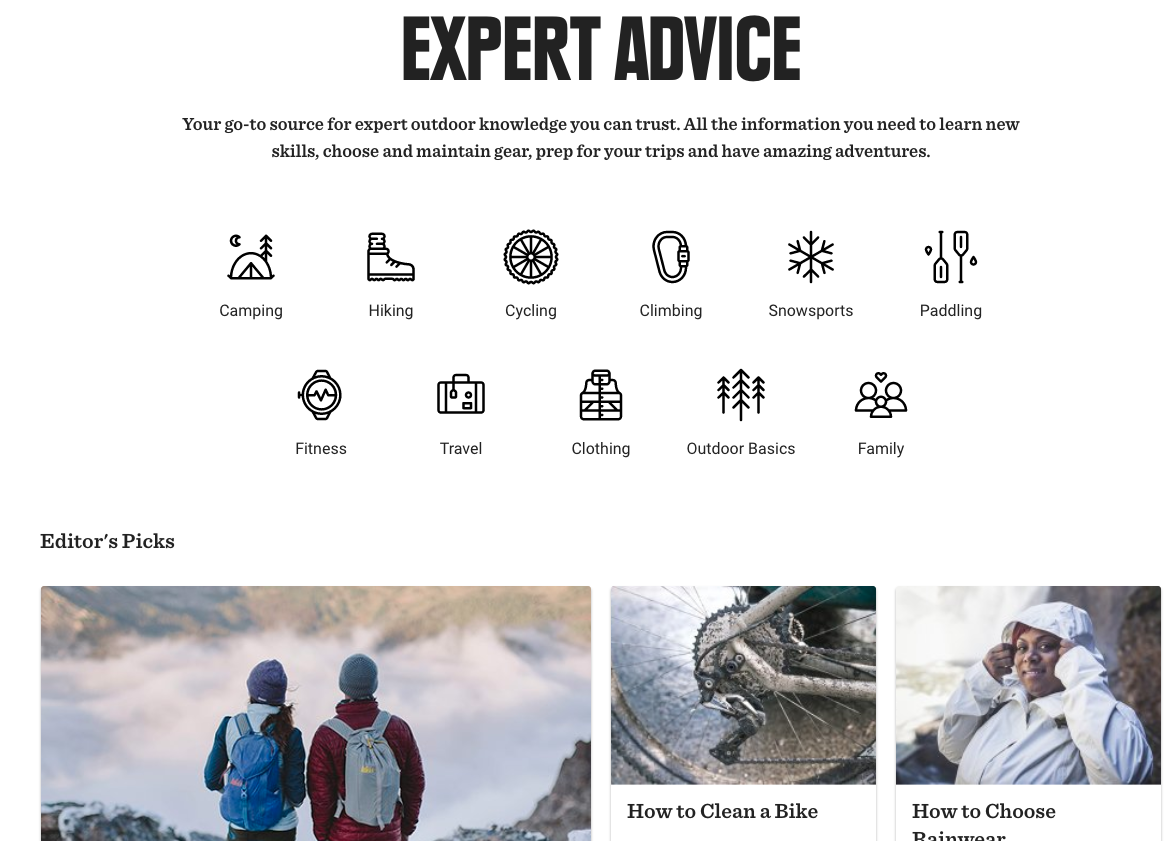
On it, REI gives advice about all relevant core topics in their industry: from hiking to camping, outdoor basics, and fitness. The articles go really in-depth and are well designed.
Altogether, the whole expert advice section collected almost 1.5M backlinks!

The last example for great guides is Apple’s mostly unknown tips and tricks section. In it, they offer all kinds of tips around their products, from very simple quick tips like “How to close an iPhone X?” to “things you can do in iOS 11.” The guides are animated with gifs and videos, which makes them very user-friendly.
Apple’s tips section has almost 18,000 backlinks, some of them come from Wikipedia, Computerworld, and Gigaom.

An extreme version of using a guide to provide value to users is iFixIt’s business model: the company provides all the knowledge (for free) you need to fix your device yourself but it sells you the parts.
No wonder that the domain has almost 2 million backlinks!

Another way to provide informational value is through how-to videos. The beauty industry is the perfect occasion for such videos and Sephora seems to do them well on their Sephora TV page.
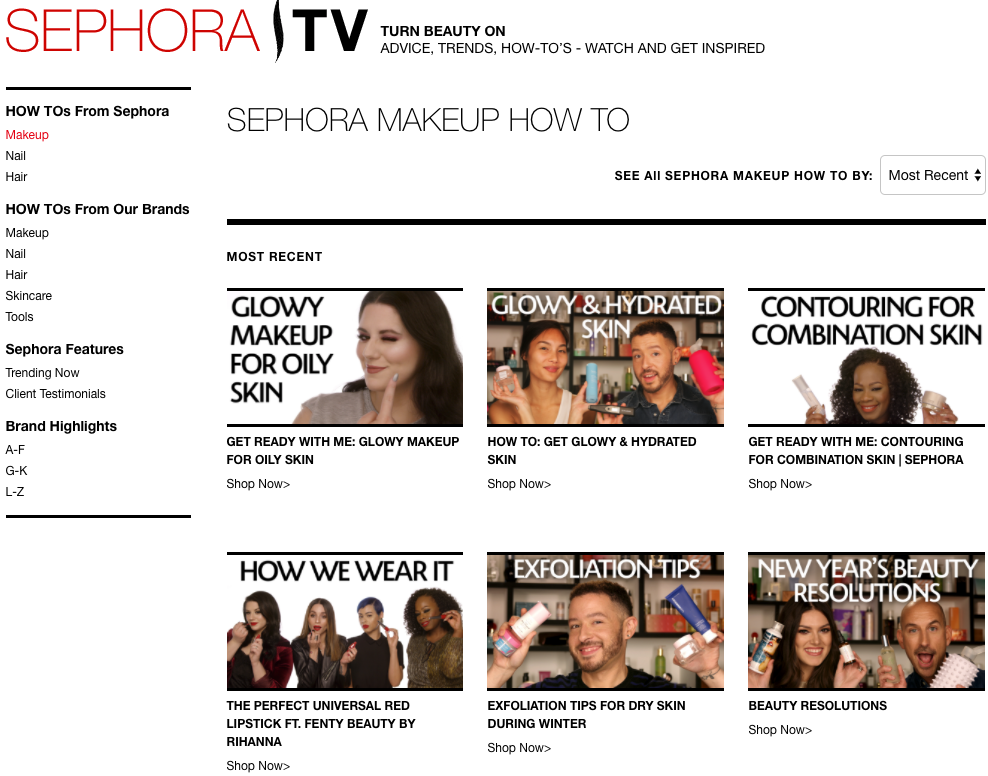
They got over 1,000 backlinks to their video section.

On top of that, Sephora’s YouTube channel has almost one million subscribers!
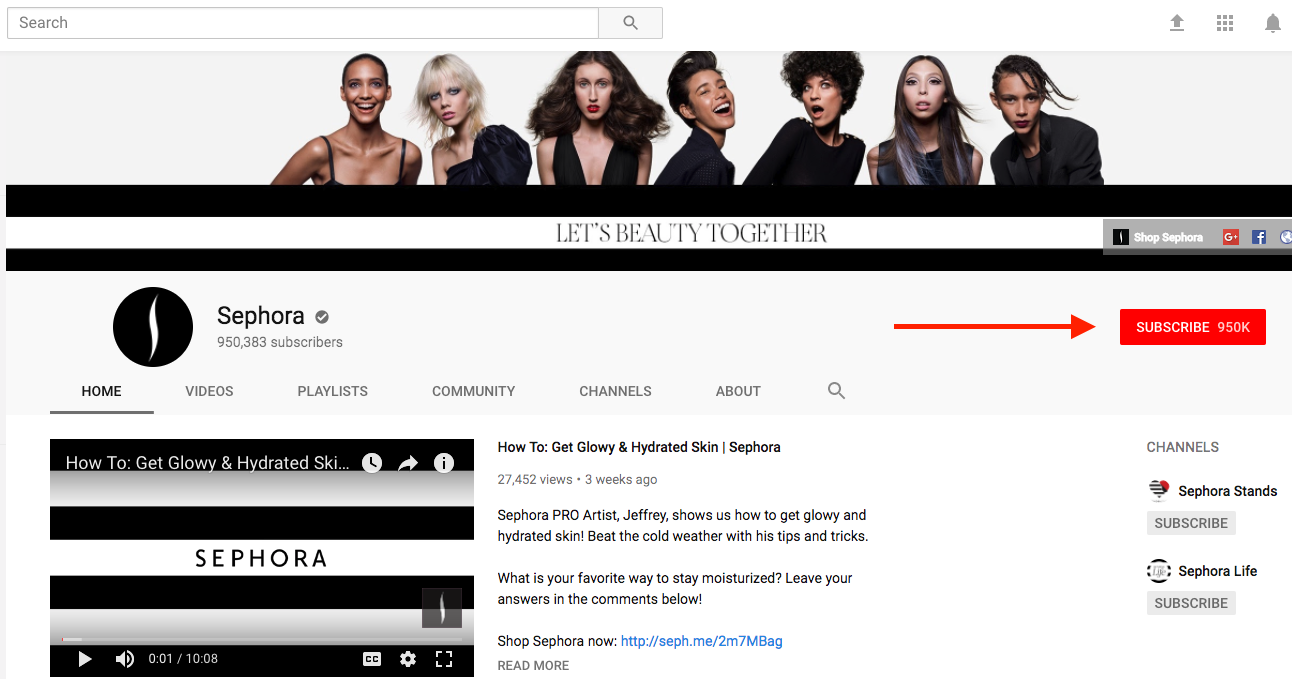
11. Build A Blog
This article around ecommerce link building wouldn’t be complete if it didn’t mention blogs. I’ve seen halfheartedly executed blogs in all corners of the internet. When done poorly, they’re never more than a burden that slows down operations.
A well-done blog, however, is a link cash machine. It attracts links, builds community around your brand, and serves as an information hub.
One such example comes from Dollar Shave Club.

The covered topics on their blog are as targeted at men as can be. The posts are exclusively for the core target audience – no one else.
That’s why the blog got thousands of backlinks.

Lululemon’s blog is another good example of targeted content. It’s almost the antithesis to Dollar Shave Club: its focus is on women, yoga, and fitness.
The whole blog has earned over 20,000 backlinks from all kinds of big publishers: HuffPo, Mashable, NYTimes & co. (despite the fact it has an ugly blog url no one can remember).

Walmart has a similar setup in their “ideas” blog. From “lunch ideas” to “bedding buying guides,” it covers everything.
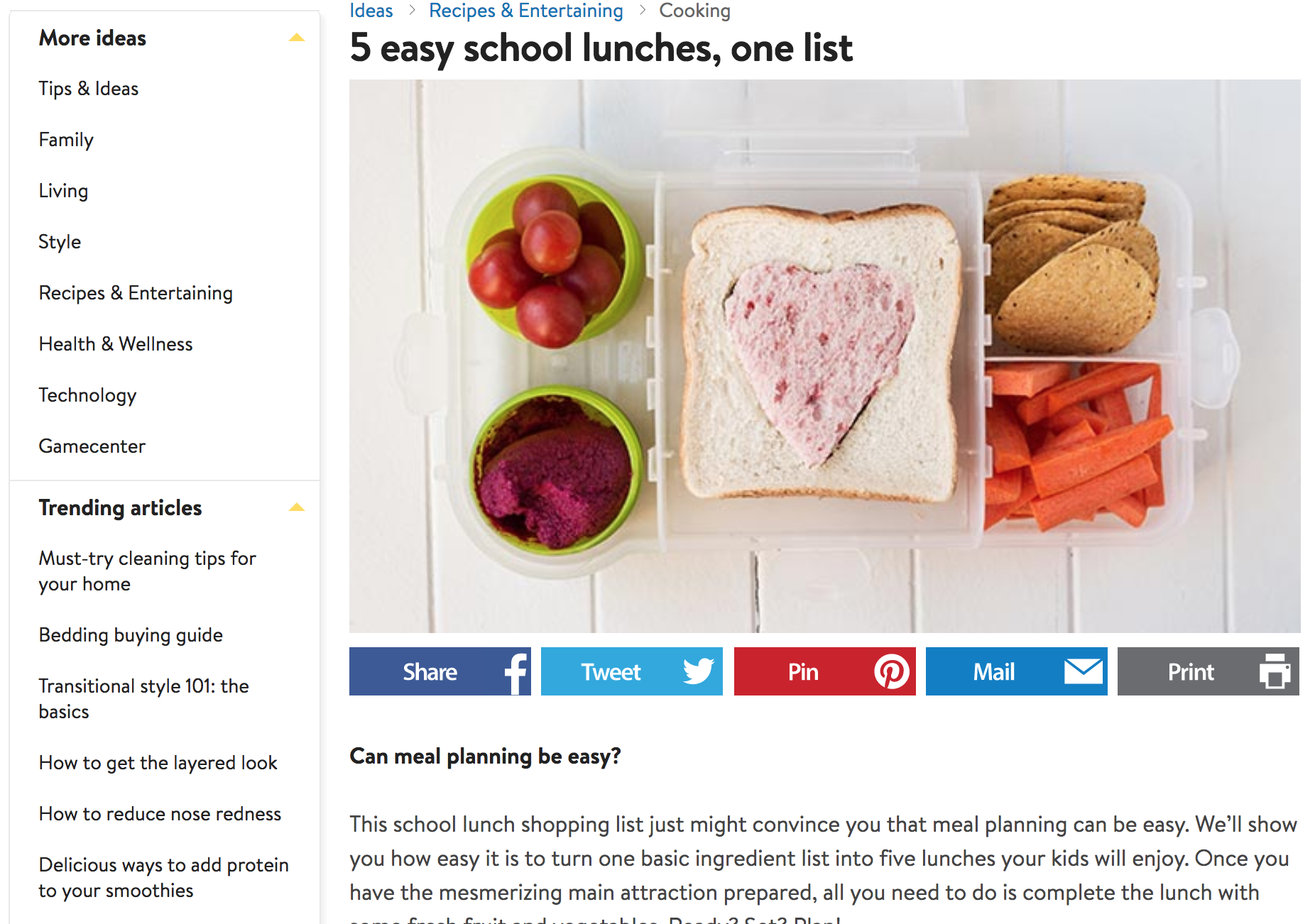
Walmart got almost 10,000 links with the ideas blog.

12. Run A Podcast
Who would have thought that podcasts could play a role in ecommerce link building or ecommerce in general? Well, some companies already successfully use it!
For example, AWS has (at least) two podcasts: the AWS podcast and TechChat.
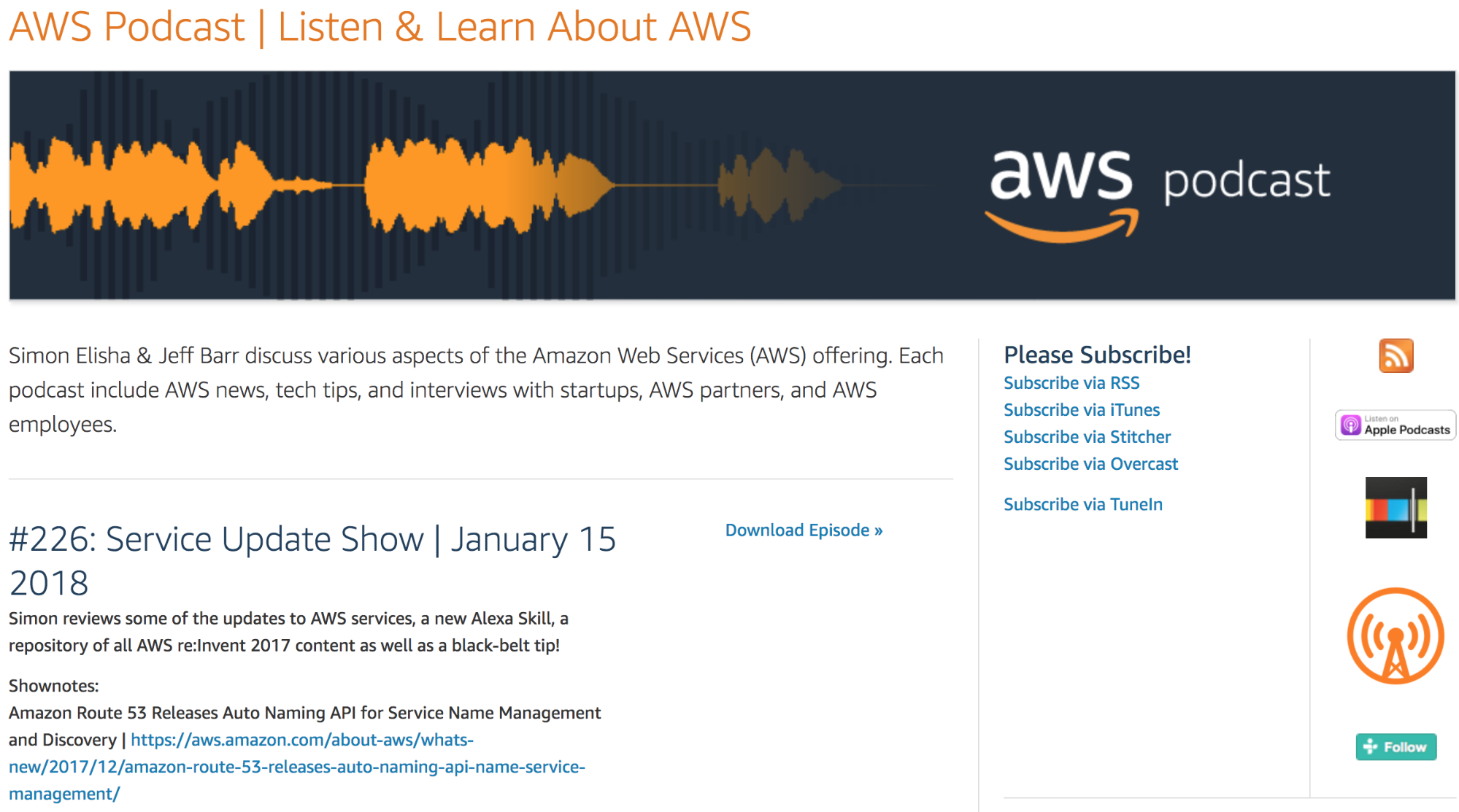
The AWS podcast is already over 200 episodes in and has collected over 500 backlinks.

AWS doesn’t just pump out product updates on the podcast but speaks about concrete use cases for their products—and there are plenty. The topic range from “text to speech” to “what’s the job of a technical account manager?”.
Podcasts certainly work best when your site revolves around a specific topic. If you sell “everything,” you have to be a bit more creative in what you can speak about. EBay is a good example for that.
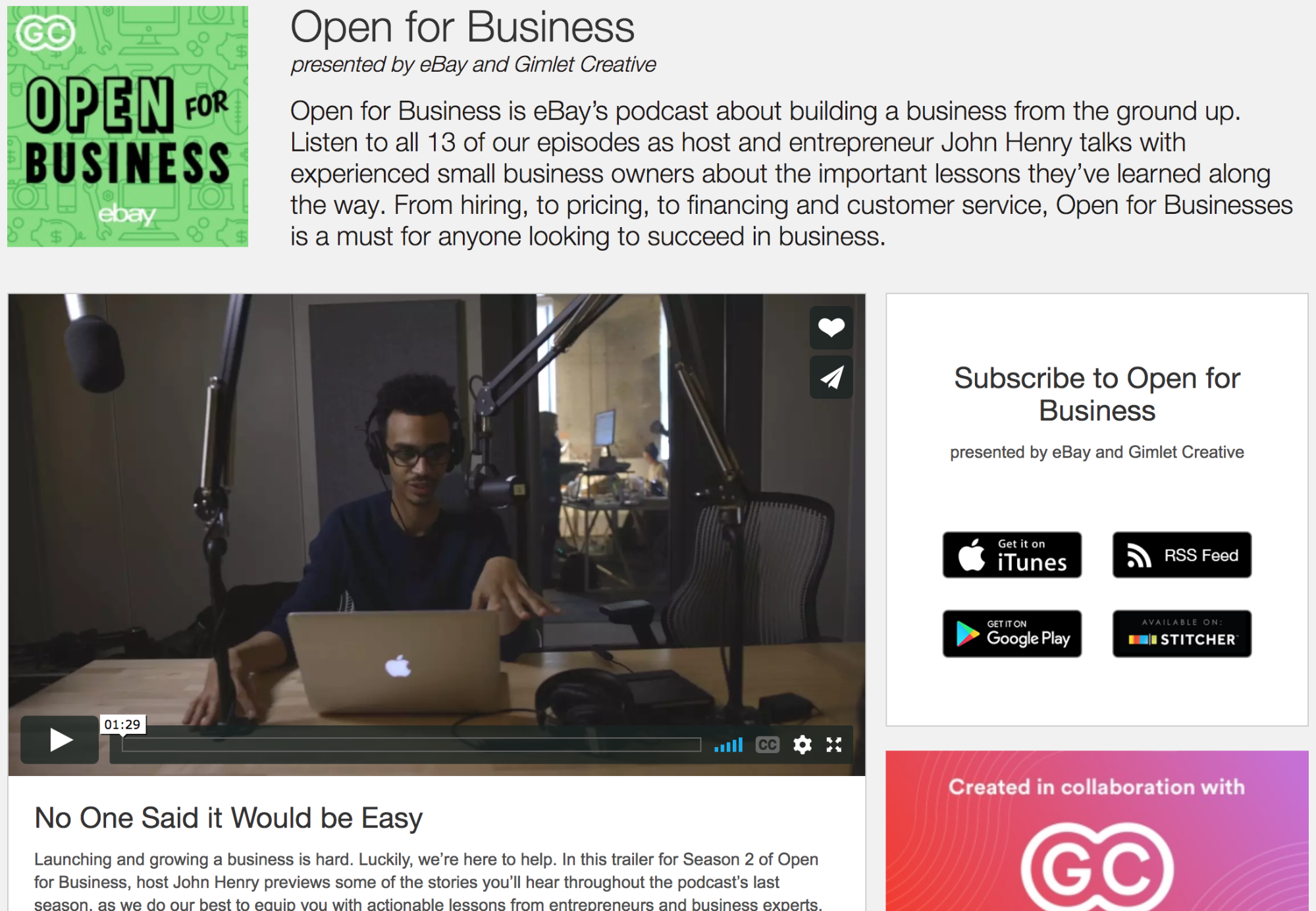
EBay’s podcast, “Open for business,” is a business podcast that covers topics like “bootstrapping,” “how to reinvent your business,” and more. It addresses small businesses that sell on eBay specifically and helps them to build their business from the ground up.
Similar to the range of AWS, eBay’s podcast has gathered a bit less than 500 backlinks.

Even though this seems like a small amount of backlinks, don’t forget the other benefits podcasts bring with them: entertainment and information for (potential) customers, brand building, easy distribution, etc.
13. Create Infographics
If there’s one tactic people connect with content marketing and link building right now it’s infographics. However, many infographics I looked at from big brands do not attract as many backlinks as expected.
REI has a whole arsenal of well-done, helpful infographics. They might share well on social media, but they rarely get more than 20 backlinks.

Even Amazon and Walmart tried infographics but hardly got any links from them.

One success factor is surely the outreach for the infographic, and that’s hard to evaluate. But across the board, infographics are doing worse than I expected.
I see three possible reasons:
- Most ecommerce infographics aren’t seeded (shared with targeted influencers) and therefore haven’t gotten as many backlinks.
- People prefer to share infographics on social media, instead of linking to them.
- There’s an abundance of infographics, which leads to decreased returns and makes it harder to stand out.
14. Develop Tools Such As Calculators And Widgets
Calculators and widgets fall into a similar category as infographics: they once worked really well but are no guarantees for link showers anymore.
AWS has a calculator that got ~200 backlinks to figure out the total cost of ownership.

But the real bread and butter is in its simple cost calculator, which has more than 50x as many backlinks.

It doesn’t have to be pretty, just highly functional. AWS’ cost calculator won’t win a beauty prize, but it allows you to effectively calculate your expenses across all AWS products.
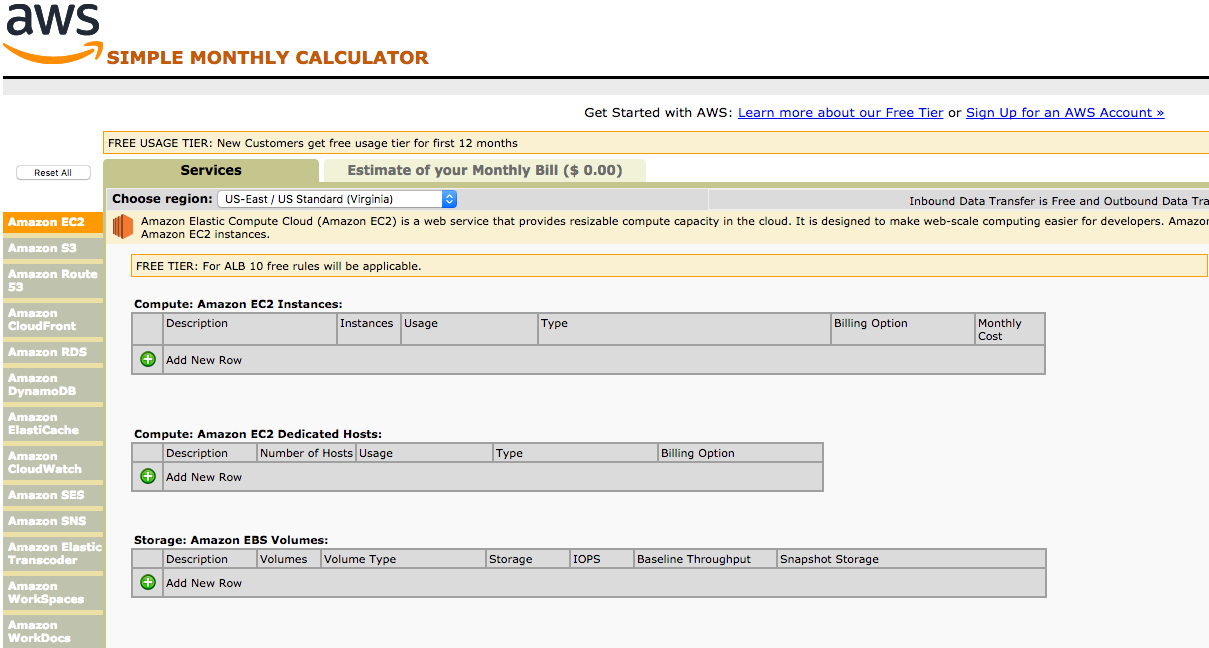
Shopify has a very simple calculator to figure out the gross profit margin of your product. It has fewer than 100 backlinks.

EBay has a fee calculator that got roughly 2K backlinks after all.

Altogether I was hoping for more links from calculators, but it was similar to infographics.
How you can build backlinks by informing and educating:
- Create guides that help your audience to make the right purchase decision, better understand the product, and get better at using it.
- Invest in your blog: define a strategy, research topics your target audience is passionate about, and create long-form content that’s better than anything out there. With blogs, it quickly becomes binary: does the content rock or not? There is not much space left in-between.
- If you have the resources, start a podcast. Make it an addition to your blog. Look for people in your company who would be eager to get on the mic.
- Shift budget you planned for infographics and widgets to content, video, and audio.
- If you go with widgets, do not give them their own domain if the main purpose is building links. It doesn’t improve your site’s “authority” as much if you get links to a subdomain or a different domain.
Successful Link Building Is More Than Just Getting Links
In the intro of this post, I mentioned how links are harder to get. The highest ROI comes from maximizing the impact of every single link you get.
Link building doesn’t end with a hyperlink pointing at your site. It continues with improving the internal linking structure of your site to make sure you distribute link juice equally to all important pages.
At the same time, links are being pushed back as ranking factors by user signals. That does not mean that links don’t carry value anymore—the opposite is true—but it means that you should not put all of your eggs into the link building basket if your user experience is not on point.
Instead, make sure links fit into the bigger picture: if they bring you referral traffic that converts you know that you’re on the right path.
Make it more than just a ranking factor.
The most powerful link building tactics revolve around outstanding content in the form of text, video, and audio. You have to evoke a strong emotional reaction to your content in your target audience: amazement, laughter, excitement, and fascination (even fear). That often leads to links from big publishers.
Don’t underestimate the power of user-generated content and giving away in this context. Humans are social animals: providing a platform for exchange (community), showing that you care about others (charity) and giving people a taste of your product (giveaways) goes beyond the soft factors that are often associated with it. That’s the art of link building.
They call backlinks the “SEO gold” so pick up your shovel and start digging!










Add A Comment
VIEW THE COMMENTS